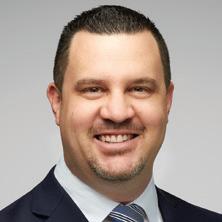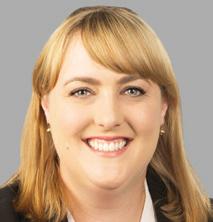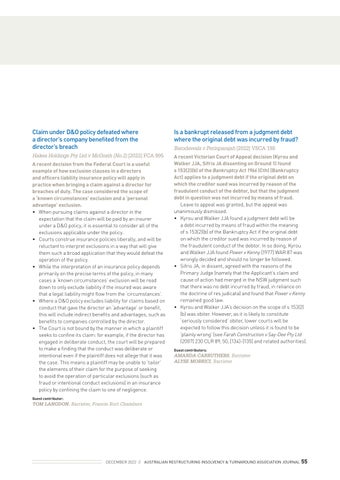

WE’RE RAISING THE BAR WITH SUPERIOR INDUSTRIAL ASSET
ADVISORY & REMARKETING SOLUTIONS

The bottom line
ALLIANCE
KEY STATISTICS
• A$75 billion of assets valued annually
• A$18 billion of assets disposed annually
• Visits to all websites: 152,000,000+
• Buyers from 150+ countries
• Equipment & Machinery Assets Sold: 600,000 in 2021
The cost-effective end-to-end asset solution that achieves the result you want, when you need it.

How
• Successful valuation and sale of assets
• The world’s largest database for buying and selling industrial equipment
• 24/7 digital marketplace
Our promise? Superior outcomes for you and your clients.
Innis
Editorial
Subscription
$49.00
Australian
ABN
Cover
 MICHAEL BRERETON ARITA President, Director, William Buck
MICHAEL BRERETON ARITA President, Director, William Buck
PRESIDENT’S NOTES
It was with great delight that we saw the announcement at the end of September that the Parliamentary Joint Committee on Corporations and Financial Services was launching an inquiry into insolvency.
For the better part of five years, ARITA has been calling for a ‘root and branch’ review of our personal and corporate insolvency regimes. Earlier this year we substantially stepped up on advocacy work on this front, retaining the unquestionable expertise of the former Productivity Commissioner, Dr Warren Mundy, to advise the Board and our CEO. It was Dr Mundy who led the PC’s inquiry into Business Setup, Transfer and Closure in 2015 – being the only broad-ranging review of our regime and the roll it plays in the economy since the Harmer Inquiry of the 1980s.
The PJC’s inquiry announcement came just a few weeks after Dr Mundy and our CEO met with the PJC Chair to raise our concerns about the increasing urgency for such a review to take place as the global economy moves into more challenging times.
LAYING THE FOUNDATIONS FOR HOLISTIC REFORM
We see this inquiry – the first review of any type in three decades which was formed purely to consider the appropriateness of our current insolvency policy settings – as laying a foundation for the reform agenda. As a parliamentary inquiry, it will not redraft our legislation. Nor will it have any decision-making force. Those steps come later and, most likely, with further review from somewhere such as the Australian Law Reform Commission.
This inquiry has the ability to recommend to all sides of government that some types of reform are needed, and to give priority to that process of starting change.
Good reform shouldn’t be rushed. In our space, we’ve seen the consequence of band-aid solutions over the last couple of decades: pancaked law that is overly complex and unwieldy. So, we are deeply supportive of a process that will hopefully identify and recommend some ‘quick fixes’ while laying the foundation for holistic reform.
“ARITA will be strongly prosecuting the case for supporting the profession, and for delivering a better regime for all stakeholders.
ACCEPTING THE POLITICAL RISK
We’ve heard from many members that they are concerned that some of the terms of reference of the inquiry may see elements of it revert to the old pattern of accusation and blame of practitioners. Given the nature of the inquiry, it will naturally attract detractors. However, that’s a reality in almost every jurisdiction around the world and shouldn’t stop us from pressing for much-needed reform.
Indeed, those very reforms that we seek should help mitigate a good portion of the angst created by our current regime.
ARITA will be strongly prosecuting the case for supporting the profession, and for delivering a better regime for all stakeholders.
FINALLY, A SEASON OF GETTING TOGETHER AGAIN
ARITA recently wrapped up our conference program for the year and, as President, I was truly delighted to be able to be a part of our Small Practice and National Conferences.
The verve at both conferences was tangible and it was wonderful to be back in the room with members from across the country. Attendance at both events was surprisingly strong and we are grateful to everyone who attended for their support.
Best wishes to all for the festive season and we look forward to what 2023 brings.




Emma
Emma

Alexandra
Ali
 JOEL BAROLSKY Principal, Edge International, and strategy consultant to law and accounting firms
JOEL BAROLSKY Principal, Edge International, and strategy consultant to law and accounting firms
MAKING THE RIGHT STRATEGIC CHOICES
Add value to your practice by adopting an innovative mindset to ensure you stay ahead.
One of the most important jobs you have is to develop a winning strategy for your firm. Put simply, strategy is the set of choices you make to maximise the chance of winning in the environment you compete in.
The set of strategic choices you have will usually include things like service range, market focus, people, pricing and brand.
‘Innovation’ is another essential decision domain. Doing nothing on the innovation front is a default choice because the external environment will keep changing, even if you don’t.
Dr Amantha Imber, the chief judge in AFR ’s Most Innovative Companies Awards, defines innovation as ‘change that adds value’. Using that broad definition, we note that insolvency and restructuring firms have three primary choices regarding innovation.
This article explores these three strategic choices and the options and practical issues in addressing them.
STRATEGIC CHOICE #1:
INNOVATION MINDSET AND RISK APPETITE?
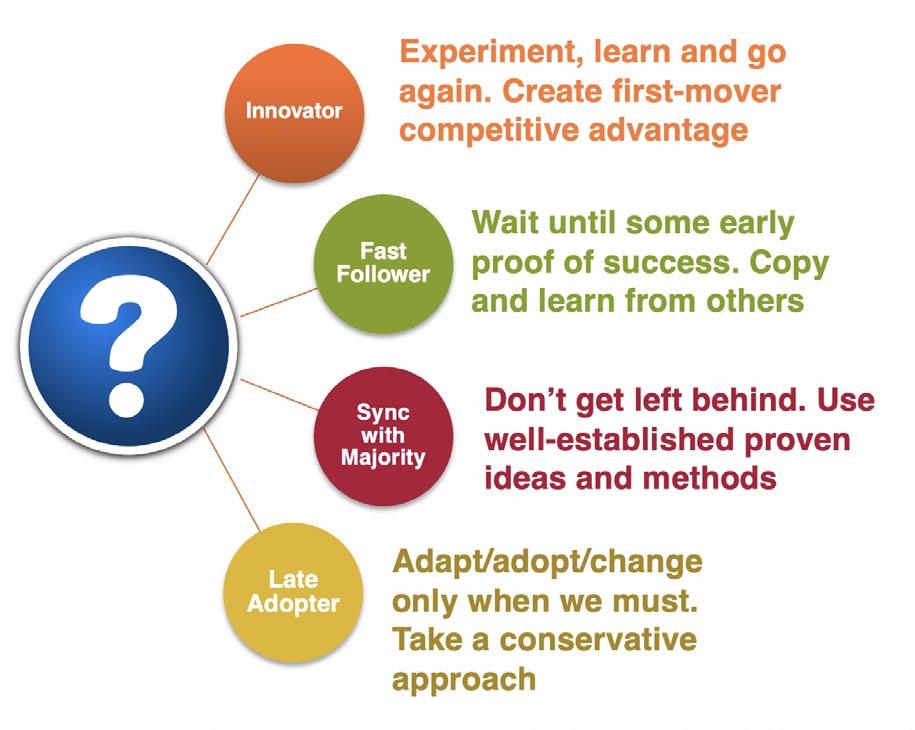
Your firm’s overall innovation mindset and risk appetite is the first choice you need to make. This decision is about finding the ideal position on a continuum, with being highly innovative at one end and a laggard or late adopter at the other. The diagram below describes two intermediate points along the continuum – a Fast Follower or Sync with Majority.
In working out your ideal position, it is worth recognising the forces at play pulling you towards the two opposite ends.
Most professional services firms are naturally predisposed to a more conservative and risk-averse position. When weighing up some uncertain future innovation benefits against the immediate direct cost of time and money, and the risk to reputation and morale, the ‘Late Adopter’ position often seems the most prudent approach to take.
There are other factors that often encourage a more conservative approach:
• Firms are currently producing acceptable profits
> no obvious burning platform to provoke change.
• Many clients are not demanding significant change
> no burning platform.
• Partnership ownership structure
> no retained funds and impatient capital.
• Focus on the billable hour and utilisation
> experimentation discouraged and little time for innovation.
• No reward for intrapreneurs or risk-takers
> no one puts their hand up to lead innovation initiatives.
• Accountants are trained sceptics
> culture demands precedent/proof.
• No established innovation methodology
> good ideas go nowhere.
In contrast, the forces pulling firms in the other direction – towards the Innovator end – are growing in significance. Significant technological advances, new hybrid working arrangements, and additional cost and revenue challenges are forcing firms to question whether the past ways of working should continue into the future.
On the technology front, virtual conferencing is revolutionising creditor meetings and voting. Online portals are improving stakeholder communications. Cloud-based accounting software like MYOB and Xero are a game changer in service productivity. Machine learning algorithms to detect fraud have the potential to make workouts better, faster and cheaper.
Hybrid working means firms can fish for talent in new pools and have more flexible work schedules to accommodate staff with competing demands.
The most obvious benefit of moving towards the Innovator end is creating an advantage over direct competitors. It can also help firms access much larger mandates and compete with firms that have more staff and offices.
STRATEGIC CHOICE #2: FOCUS OF INNOVATION EFFORTS?
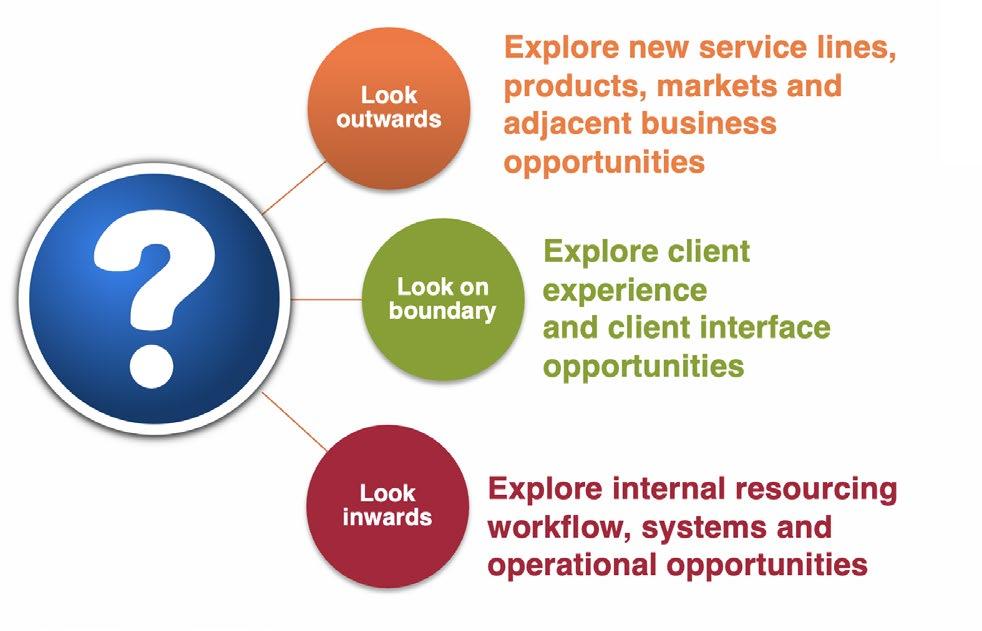


The second major choice refers to where you can focus your innovation efforts: external, internal or on the boundary.
When exploring external opportunities, it is worth drawing on the work of Bain & Co Partner Chris Zook, otherwise known as the father of adjacency theory. Zook states that firms usually consider adjacencies for the following reasons:
1. Provide new sources of profitable growth, especially if the core business is flat or in decline.
2. Strengthen, reinforce or defend the core business.
3. Compete in the core market in a new way or with a redefined business model.
4. Provide a hedge strategy or mitigate risk in the event of significant industry disruption.
5. Enable the firm to achieve or live its purpose more profoundly.
In his book Beyond the Core, he suggests six types of external adjacencies as illustrated in the diagram below.

“If you’re not keeping pace or changing faster than your competitive environment, you’re going backwards.
The client journey may be adjusted for different client profiles or personas, for example, first-timers or experienced purchasers.
In one professional services firm, client journey mapping found that long-standing clients were irritated by the fact the firm’s reception staff didn’t acknowledge them. In response, the firm turned an ‘ow’ into a ‘wow’ by asking reception staff to do a LinkedIn search of all office visitors at the start of the day and then to greet all visitors by name.
Zook’s research provides some useful rules of thumb regarding growing into adjacent areas. The odds of success of a move that is one step from the core business is around 35% (across all industries) and drops to less than 20% two or more steps from the core. The old adage of ‘sticking to one’s knitting’ comes to mind when considering these odds. Countering this narrative, the maxim that ‘fortune favours the brave’ is also worth considering.
The second focus area for innovation is on the boundary, that is, client experience and client interface opportunities. A growing body of research shows that a frictionless and emotionally engaging client experience is a powerful driver in fostering client loyalty and referrals.
Improvement to client experience usually starts by mapping the client journey for a typical client and then asking: (1) which steps or activities on the journey are ‘ow’ (causing pain, making life harder, causing irritation), and (2) where’s the potential for ‘wow’ (adding value, creating joy, engendering trust).
The third area of focus of innovation efforts is internal. The usual drivers here are improved efficiency and effectiveness. The Barolsky Professional Services Value Chain below can help identify specific areas worthy of innovative change.
So, for example, if ‘Service delivery – Workflow and process design’ is selected, the firm would then identify innovation opportunities by addressing three interrelated questions:
• People
What changes to ways of working, behaviours, roles and responsibilities and organisational or team structure are possible and will add value?
• Process
What changes to how tasks are performed and who performs them will add value?
• Technology
What changes to existing technology or the introduction of new automation technology can add value?
STRATEGIC CHOICE #3: ROLE AND IMPACT OF FIRM CULTURE?
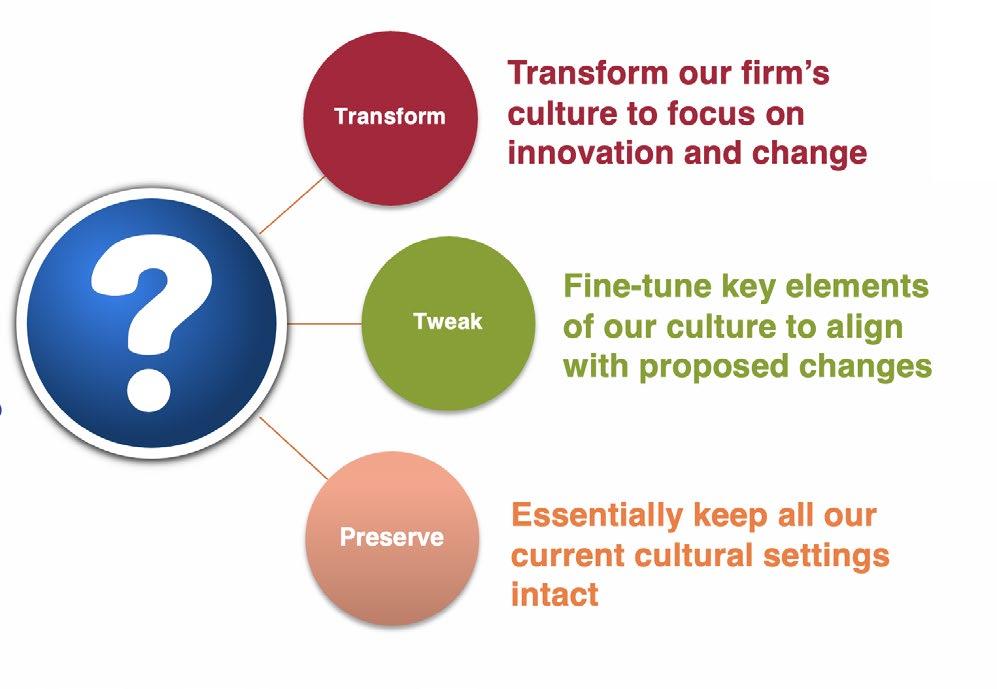
The firm’s culture can be both a constraint and an enabler of innovation. If a decision is made to adopt a more innovative mindset and be less risk-averse (Transform), a shift in the firm’s culture is likely required to align with this new intent.
SEVEN AREAS THAT CAN CATALYSE CHANGE
When shifting culture it is worth reflecting on seven areas that can catalyse change, as reflected in the table below. These areas are loosely based on the McKinsey 7S framework.
IN CONCLUSION
If you’re not keeping pace or changing faster than your competitive environment, you’re going backwards.
The turbulence in insolvency and restructuring has dialled up a notch or two in recent years. Economic conditions are deteriorating for many businesses, and regulatory change never stops. Technology is making a significant impact on the way work is produced, and service is delivered. The Covid-19 pandemic has transformed the way we work and interact.
In this world, you can keep on keeping on, or you can explore with much more rigour whether you need to become more innovative. Innovation will help you start to make changes that add real value.
Area Detail Example
Systems The firm comprises numerous systems that influence and shape culture, e.g. remuneration, performance management, production, communication, etc.
Stories War stories and case studies convey compelling messages around the behaviours and attitudes that underpin the desired culture.
Style The style and role modelling of the firm’s leaders in support of the changes.
Staff The firm hires and develops people with the requisite innovation mindset.
Structure The firm is redesigning its organisational structure to provide more dedicated resources for innovation efforts. The structure could also relate to the power given to those with an innovation role.
Symbols The symbols of change ranging from tangible changes in office design to more tacit indicators of what’s more or less important.
Shared values The statement of core values used by the firm in its strategy documents, performance reviews and published materials about the firm.
A tweak to our performance management and reward system gives more weight to innovation efforts in bonus decisions.
We often tell the story about the associate who was given 4 hours a day budget relief to re-engineer the XYZ process. His efforts ultimately resulted in a 15% cost saving across the business.
Our firm’s managing partner mentions the innovation strategy in almost every meeting and presentation.
We are introducing criteria and questions in employment interviews around openness to change.
We created a new cross-disciplinary innovation committee to ensure diversity of inputs to innovation decisions and encourage broader buy-in to changes that we seek to implement.
The firm’s weekly report now includes a new section on progress and achievements of the firm’s innovation efforts.
The firm has a core value of innovation expressed as ‘Evolve Always – Curious, imaginative and tech-savvy, forever challenging the status quo’.
 KAREN MATTHEWS Business Transformation Consultant
KAREN MATTHEWS Business Transformation Consultant
AUTHENTIC LEADERSHIP
What makes an authentic leader, and why is authenticity so important?
The term authentic leadership is getting a fair bit of use now, and like many other so-called ‘buzz words’, it runs the risk of being glossed over as ‘another fad’, with limited understanding from most on how to mould this very powerful concept to suit an individual leadership style, and create a stronger business culture and improved performance.
Authentic leadership is not a leadership style. It is built on character – it is who you are extended into the way you lead.
Authentic leaders have a beautiful blend of long-term vision and the here and now. They have a long-range vision, but are focused on the present, believing that conquering one-step-at-time will lead to long-term success.
GREAT CULTURES START WITH AUTHENTIC LEADERS
When you think back to the influential leaders in your life, what were the attributes they had that stand out in your memory? Were they ethical and transparent? Did you trust them? Did they have a good sense of their own skills and opportunities for improvement? If so, you are likely to have experienced authentic leadership.
Authentic leadership is more than a corporate buzzword. When an organisation has an authentic leader at the helm, employee engagement improves, job stress decreases, productivity skyrockets, work culture improves and more.
The Harvard Business Review found that 75% of employees want to experience more authenticity at work. Authentic leadership is crucial in cultivating a great culture and recruiting a diverse workforce.
AUTHENTIC LEADERS
Authentic leadership is effective leadership. With its roots in Greek philosophy, today, authentic leaders are self-aware, genuine and forthright about their humanness – the good and the bad.
If you look at some of the most well-known authentic leaders over time – Mother Teresa, Nelson Mandela, Richard Branson, Steve Jobs, to name a few – they share(d) the same qualities:
Self-awareness: Authentic leaders have a clear value system and know what they stand for. They understand and own their strengths and weaknesses and reflect on these honestly in relation to their decisions and actions. They don’t hide their mistakes and they share their learnings.
Their perspective is one of constant growth and improvement as well as a commitment to hold themselves accountable to their own values and moral compass.
Integrity and moral perspective: Strength of character is a key quality. Authentic leaders do not say things they don’t mean. They keep their word and do as they say they will do: no matter what.
Driven by ethics, an authentic leader aims to ‘do the right thing’, even when faced with situations in which doing so could negatively impact the company’s bottom line. People respect and trust them because of this quality.
Leading with vision: Authentic leaders are purpose-driven. They add value to the people they interact with and help others realise their goals. They push themselves and others to raise the bar and have the confidence to aim for excellence.
Balanced processing and good listening skills: Before making a decision, an authentic leader solicits input from the team. They genuinely want to hear opposing viewpoints and believe the best decisions come from discussion and consideration of all options. They encourage input from across the business and ensure all viewpoints are heard, tabled and considered.
Transparency: Authentic leaders do not have hidden agendas. They believe in open communication and masterfully combine their forthright communication with empathy. The balance of clarity, honesty and sensitivity creates trust and gives people confidence in their leadership.
They are open, share the wins and challenges and take the responsibility of keeping the business up to date and looking forward very seriously.
“Authentic leadership is not fluffy, it is not soft and it is not the easy way out. It is not a ‘me-too movement’, or a buzz-word, and it certainly isn’t weak.
Karen Matthews
“The great leaders are not the strongest, they are the ones who are honest about their weaknesses. The great leaders are not the smartest; they are the ones who admit how much they don’t know. The great leaders can’t do everything; they are the ones that look to others to help them. Great leaders don’t see themselves as great; they see themselves as human.Author and motivational speaker Simon Sinek
Focused on long-term results: Authentic leaders do not worry about temporary setbacks or hiccups along the way. They believe in setting a clear vision and crafting the strategic actions to get there.
They know that patience, resilience and an ability to remain open, flexible and responsive will deliver results in the long run.
Consistency: Authentic leaders aren’t fickle. They know and believe in who they are and stick to their principles. They are not swayed by superficialities, popular opinion or societal pressure. They have a strong self-image that is truly who they are, whether in the public spotlight or at home on the weekend. They are who they are.
Heart-led: Authentic leaders trust their gut. They wholeheartedly believe in their intuition and back themselves. They are not afraid to look within and encourage their teams to do the same.
Authentic leaders lead with courage and empathy first. They do not succumb to the pressure of doing what is expected, what is easier or what will deliver short-term gain; knowing that long term, heart-led leadership will deliver the vision.
Share success with their team: Authentic leaders not only build a great team, but they share success and achievements with the whole team. They celebrate the wins and acknowledge the individual efforts.
Authentic leaders know what motivates individual team members and recognise them in a way that ensures they feel valued and appreciated.
Draw on experience: Authentic leaders draw on and share lessons learnt from experience – real life stories, experiences, lessons and tips. They openly and genuinely share to inspire and to help others grow and improve.
Authentic leaders are fully invested in encouraging people to be the best they can be, and love nothing more than cheering on a team member as they achieve their goals.
BENEFITS OF AUTHENTIC LEADERSHIP
At its core, authentic leadership is a purpose and values-led approach to leadership that is centred on building the leader’s legitimacy through honest team relationships. Today, more than ever, this approach is not only crucial for overall morale, but it is also good for business.
Customers and clients have many choices when it comes to a functional product or service. The business they will ultimately chose to engage with will be the one that they connect with: the one that ‘gets them’ and that they feel is aligned to their values.
There are several good reasons to drop the facade in favour of authentic leadership:
1. Boost employee engagement
When employees are familiar with where the organisation is going and feel trusted to go beyond their comfort zone, even if it results in a mistake, they are more invested in helping the organisation achieve its goals. When people feel seen and understood they’re more likely to act and engage, whether as an employee or customer.
2. Build an inclusive culture
Studies have found that when leaders are authentic, it helps to create an inclusive, safe and aligned workplace. When leaders model comfort with values, open communication, accountability and establish rules around unacceptable behaviour, it builds a culture of alignment and trust.
When the leader encourages open dialogue, employees are free to express who they truly are and what they think. People feel that the leader genuinely cares, and their point of view is wanted, valued, will be heard and considered. From there, a powerful and truly inclusive culture is created.

“Your brand is what people say about you when you’re not in the room.
Amazon Chief Executive Jeff Bezos
3. Inspire employees to grow
An authentic leader isn’t afraid to take responsibility for their mistakes and openly encourage people to speak up, table new ideas and express opinions.
An authentic leader values diversity of opinion and perspective and is not afraid to admit that they don’t know the answer to something. As a result, employees will be inspired, motivated and believe they can achieve growth and advancement in a company when they see that even those in leadership positions aren’t perfect.
4. Drive trust
People want to do business and work with people they trust. Trust is essential for a thriving workplace culture, especially during times of change or uncertainty. When a leader demonstrates trust in their team to handle their role with care, integrity and diligence and encourages employees to be themselves while doing that, it will significantly boost productivity.
When a leader can express to the team that they recognise, value, understand and support their purpose, and encourage individuals to share their insight and opinions, it creates a sense of ‘one team in business together’ and inspires new levels of trust.
What is your brand?
5. Employees want authenticity
Millennials (in particular) have high expectations of not only the businesses they buy from, but which ones they will work for. They want to support and work for brands that are honest. A Cone Communications’ Millennial Employee Engagement study reported that 75% of millennials would take a pay cut to work for a more socially responsible company.
Authentic leadership is not a corporate buzz word and is not something that a leader can ‘fake until they make it’. Inauthentic leadership will be quickly exposed and is highly damaging to trust, confidence, respect and overall corporate culture.
6. It’s easier to be yourself
Leading as an extension of who you are makes sense and is authentic. To be able to harness your purpose and values, and extend this into the way you lead, requires a lot less effort than trying to be someone you are not, with a style that is not in keeping with who you are.
Leading from the heart and core of who you are increases the likelihood of consistency, builds trust and confidence, and will improve your ability to attract the right people into your team.
THE TRUTH
Surprisingly, there are still some who don’t believe in authentic leadership, and who are quick to dismiss it as the latest business buzz word and as emotional, soft, weak and not a fit concept for the real world of business.
Thinking about the above examples along with many others, it is fair to say authentic leadership is not fluffy, it is not soft and it is not the easy way out. It is not a ‘me-too movement’ or a buzz word, and it certainly isn’t weak.
Consider these renowned authentic leaders, their individual brands and what they stand for.
Nelson Mandela
• Represents peace, justice and wisdom.
• His integrity created a movement – a moment in history.
• When people see his image they think of human rights, strength of character and one man defying the odds.
Richard Branson
• The heart-led, back yourself, ‘screw it let’s do it’, apologise later entrepreneur.
• His infectious personality is consistently fun, adventurous and highly engaging.
• He has always been and still is a champion for innovation and disruption – a relentless supporter of entrepreneurs and those starting out.
Steve Jobs
• A meticulous, obsessive and autocratic leader.
• He stood for relentless pursuit of excellence.
• He expected a lot from himself and others and believed in the power of asking.
• He believed in breaking the rules to be different.
THE SECRET TO AUTHENTIC LEADERSHIP
Authentic leaders:
• Commit to a strong, cohesive image: What will people see/think of when they hear your name?
• Do good work: A great image will make people pay attention, but to keep them engaged and paying attention you need to do great work. You need to meet or exceed expectations and demonstrate you have the substance to back up your style.
• Are ahead of trends: No one is inspired by a leader who cannot (or refuses to) reinvent themselves. An ability to continue to evolve, grow and remain one step ahead will instil trust and confidence in the strength and longevity of your leadership.
• Are interesting and diverse: Steve Jobs wasn’t just a computer and design guru: he was a renaissance man. He studied literature and the Arts, and he brought that expertise to bear on his work at Apple.
Your personal brand needs to be cohesive, but not boring. Your interests and diversity are what make you unique, and it is that person that people will connect with.
HOW AUTHENTIC IS YOUR LEADERSHIP?
When evaluating your level of authenticity, ask yourself:
• Do you inspire new opinions, or even (constructive) disagreements? Why or why not?
• Do you ask for feedback? And from whom? Consider asking for feedback from colleagues who aren’t your direct reports. Expand your horizons to seek broader, honest opinions.
• Do you periodically self-reflect? Review and assess yourself as a leader based on your brand attributes. Ask yourself where you succeeded and where could you have acted/communicated differently. Regular reassessments can prove helpful and keep us honest.
• Do you trust your gut? Your instincts are based on your learnings. Trust them and recognise them not as a ‘spur of the moment’ decision but one based on intuition and experience.
Authentic business leaders are often known to seek constant growth through their own experiences, lead by example, recognise diversity and foster inclusion. In my experience, those who dare to be authentic have the courage to be vulnerable, embrace authenticity and build successful teams that in turn deliver strong results.
What you can do to improve the authenticity of your leadership
• Look for and take on feedback from your team, peers and other individuals.
• Reflect on your own behaviour –what do you do well and importantly, where do you need support, development or improved effort?
• Admit your mistakes.
• Apologise when necessary.
• Be aware of your own feelings and always observe them. Doing so is key to being authentic.
• Be approachable.
• Show emotion, compassion and your human side.
• Let employees know you care for them as individuals and fellow human beings.
• Do the right thing.
• Try not to micromanage your employees.
• Be genuine. Whether the message is good or bad, or whether the decision is complex, challenging or simple –be you, no matter what.
• Appreciate, value and involve your team wherever possible. The more people feel seen, heard and valued, the greater the trust, engagement and ultimately loyalty they will show.
• Acknowledge contributions, resilience and results.
 DOMINIC ROLFE Business Journalist
DOMINIC ROLFE Business Journalist
LOCAL FOCUS, GLOBAL IMPACT
One of this country’s most accomplished insolvency professionals reflects on her career and recent receipt of an Order of Australia – recognition she says is a long overdue acknowledgement of the entire profession.
When Robyn Erskine received an email in early 2022 about being nominated for a Member of the Order of Australia (AM) award, she nearly deleted it. The Melbourne-based insolvency practitioner had no inkling that she had been nominated, so when the email from the Governor General landed in her inbox, the warning bells rang wildly.
“I never imagined the Governor General would be writing to me,” says Erskine. “My first instinct was that if I clicked on the email, all my bank accounts would be drained or frozen. It took a little while to realise it was real and for me to accept that I was actually being considered for an award within the Order of Australia.
“At that stage I really was not expecting this would go anywhere and was happy to just have been nominated,” she adds.
For someone who almost fell into her career, Erskine has been a quiet powerhouse of the insolvency and accountancy professions. She started her journey in 1978, firstly as an office assistant to insolvency specialist Neville Bird, and then later with John Brooke when he joined forces with Bird to create Brooke Bird.
Erskine says she was intrigued by the work they were doing and was drawn to the human side of insolvency, where you have the opportunity to help rebuild shattered lives.
Knowing her career path was limited without formal qualifications, Erskine returned to studying part-time while working full-time in the practice. In 1990, she juggled the final stages of her degree, starting her Professional Year with the Institute of Chartered Accountants (now known as CAANZ) and the birth of her first child.
Little did she know that things were going to get a whole lot busier with the arrival of one of the deepest recessions in Australian history.
While the significant rise in insolvency numbers and the volume of organisations needing the advice of insolvency professionals was challenging, it nevertheless provided a unique opportunity to understand the complexities of dealing with those in financial stress.
With talk of a looming worldwide recession on the back of the global COVID-19 pandemic, Erskine reflects that now is another critical moment for restructuring and insolvency professionals to be at the forefront of partnering with government, regulators and business as they work towards repairing and revitalising our economy.
In late May of this year, she received another letter from the Governor General (one that she was far less wary of), notifying her that her nomination had been successful and Erskine was to be awarded an AM in the 2022 Queen’s Birthday Honours list for her significant service to accountancy and professional associations. Her citation is particularly remarkable given it cites her extensive, concurrent volunteer commitment to three different professional associations: ARITA, CPA Australia and Australian Institute of Credit Management.
“It’s a thoroughly deserved award,” says ARITA CEO, John Winter. “In what is a tough and competitive profession, Robyn is universally respected and admired. She simply has no detractors. She is humble and generous and in a profession in which only eight percent of registered practitioners are women, Robyn has been a trailblazer, role model and inspiration for many.
“I have been CEO of ARITA for going on eight years and I can say with absolute certainty that no one in the entire restructuring, insolvency and turnaround profession comes close to Robyn in terms of commitment, engagement and contribution to ARITA or in what she does for the profession more broadly.”
The lengthy list of Erskine’s work with ARITA, CPA Australia, CAANZ, the International Federation of Accountants (IFAC) and the Australian Institute of Credit Management (AICM) unspools like a Christmas grocery receipt.
Erskine was the first woman to join ARITA’s Board in 2005 and was the first female President of ARITA in 2011 (serving her full two-year allowable term). She is serving or has served as a member or chair of no less than 14 committees across those organisations. She is also ARITA’s current representative on the INSOL International Board of Directors.
On top of her ARITA presidency and committee work, Erskine received the 2015 ARITA President’s Award for outstanding service to the profession, and was made a Life Member of ARITA in 2017 in recognition of her extraordinary contribution; making her the first and only female Life Member of ARITA. At the time, she was just the 16th person to be given this title.
Erskine believes that all this extra work has been part of a lifelong curiosity. “What has stood me in good stead is
“It’s not about one person, it’s about many people embracing opportunity and bringing about change.
that, while serving the profession and immersing myself in those opportunities, I have learned an awful lot.”
As a small practice professional, committees and roundtables have been invaluable sources of continued education.
“I remember some years ago the then principal at my son’s school spoke about the transition from primary to secondary school. He likened the students to goldfish in a
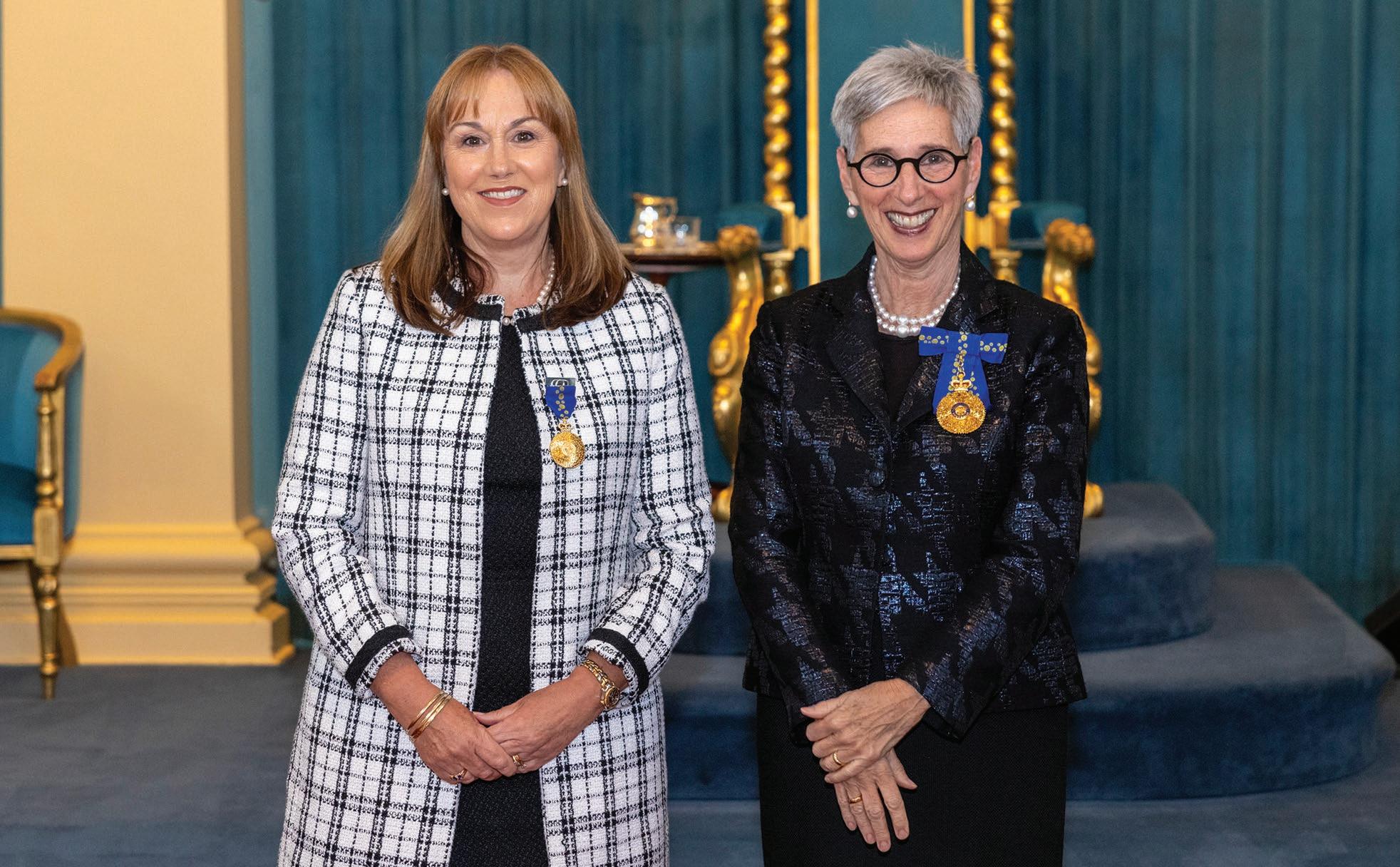
“We need to deal with the overly complex arrangements that come from having two pieces of legislation.
What’s remarkable is that Erskine has taken on all her extra roles while remaining in small practice: she has never worked in a large professional firm and her current firm, Brooke Bird, has a staff of 10.
While practitioners in large firms are able to draw on the broad support of their extensive organisational resources, Erskine sees considerable benefits from working in a smaller, more nimble operation.
“I’ve certainly had my opportunities to go to larger practices,” she explains. “At its most fundamental, the people I’ve worked with in small practice over the years have been wonderful.
bowl, and said that the goldfish will only grow as big as the bowl allows. You have to immerse yourself in the bigger pond to be challenged and continue to grow,” Erskine says.
“That approach resonated with me, and by immersing myself in the wider world, I have expanded my network and my knowledge with different thoughts, approaches and experiences,” she says.
“My work on the various committees and roundtables has been responsible for creating incredible relationships that have helped shape the future of the profession: not just the insolvency profession but the wider accounting profession.”
Erskine adds that she isn’t just aiming to solve issues of the day. She’s invested in growing and pushing the profession to improve both its technical expertise as well as its foundational principles and composition.
As one of the just 59 female registered liquidators in Australia out of pool of 644, and one of only 24 female registered trustees out of 209 – proportions that are defiantly hard to shift – Erskine’s work on the ARITA Balance Committee is crucial.
“Our members deal with all parts of the community,” she says. “We need to ensure that our professional base is reflective of the Australian community because if we don’t understand all the different human aspects of our work, we’re less able to achieve an optimal outcome.
“Our work on the committee has also identified that organisations that embrace diversity and inclusion are more successful than those who don’t. Helping members embrace this mindset is an important piece of work currently being undertaken by ARITA.
“We’re already seeing increasing numbers of women entering the wider legal and accounting profession, however, we need that to translate into the insolvency and turnaround sector. It’s one of the areas that I’m keenly aware of and want to see change in,” she says.
“They have ranged from those who gave me the opportunity at the outset and believed that I had the ability to do the role – for which I am eternally thankful – to the current team at Brooke Bird who are all exceptional people and part of a team where we support and value each other’s success.”
Small practice is where her heart is, and Erskine says it has given her the opportunity to grow into the person she is today. At a more structural level, when Erskine became partner 30 years ago, she says her colleagues at Brooke Bird were incredibly supportive and progressive: something that certainly wasn’t a given for insolvency practices in the ’80s and ’90s.
She worked hard, but the firm gave her the flexibility to pursue a career while remaining an integral part of her family with her husband and two sons.
“Family was and still is incredibly important to me, not least because it makes me the whole person I need to be so I’m good at being a wife, a mother, a friend … and an insolvency practitioner.”
Her involvement in professional groups beyond the usual four walls of her relatively small workplace has become especially important in a post-COVID era of remote and hybrid work.
“People need to be aware that it’s really easy to put yourself in a little box where you agree wholeheartedly with yourself all the time,” says Erskine.
“One of the trade-offs of working more independently is that at times there is a lack of collaboration and opportunities to challenge yourself. Insolvency and turnaround professionals, just like professionals in any sector, need to be mindful of that.”
A GLOBAL OUTLOOK
In June 2021, Erskine was appointed as ARITA’s representative on the board of INSOL International, the global federation of national associations of turnaround and insolvency specialists. (INSOL is currently headed by another former ARITA President, Scott Atkins.)
INSOL isn’t Erskine’s first international posting. From 2015 to 2020 she was a member of the International Federation of Accountants (IFAC) Small Medium Practices Advisory Group, where she was the deputy chair and also the chair of the Ethics Taskforce.
“While my expertise in the Australian insolvency and turnaround scene is obviously important, I think my international experience with IFAC has been incredibly helpful during my time on the board of INSOL,” says Erskine.
“When you’re dealing with an international board, you’re dealing with different jurisdictions, different cultures, different regulatory systems and policies. All that impacts on how the board goes about its business.
“I also think that my long-standing experience of working in a small practice environment allows me to bring that lens to the work INSOL does.”
Being able to take a step back from the local insolvency milieu has given Erskine a crucial view of worldwide issues, both present and emerging.
“INSOL looks at the international impacts and needs of the wider insolvency and turnaround profession,” says Erskine. “But some of our most important work is in
identifying and analysing global trends. Each economy is a subset of the global economy and what you see looming at a global level allows you to plan for the consequences at a domestic level. If we can spot the tsunami, it’s an opportunity to plan so you don’t get totally wiped out.”
One of the biggest takeaways for Erskine’s involvement on international boards is the unique way that Australians approach problem solving. So just what is it that Erskine thinks makes Australians different to practitioners from other countries?
“I think Australians are really good at identifying issues and getting to the point very quickly. I don’t have the answer as to why that is but it’s certainly a strength I’ve observed in Australians in the international scene and it’s one of the reasons I think Australians on the world stage are often very successful.”
Erskine does offer a word of caution, however. “While we’re good at speaking plainly and directly, some people consider that approach to be overly blunt. We have to be really mindful of that because in different cultures this can be seen as quite offensive.”
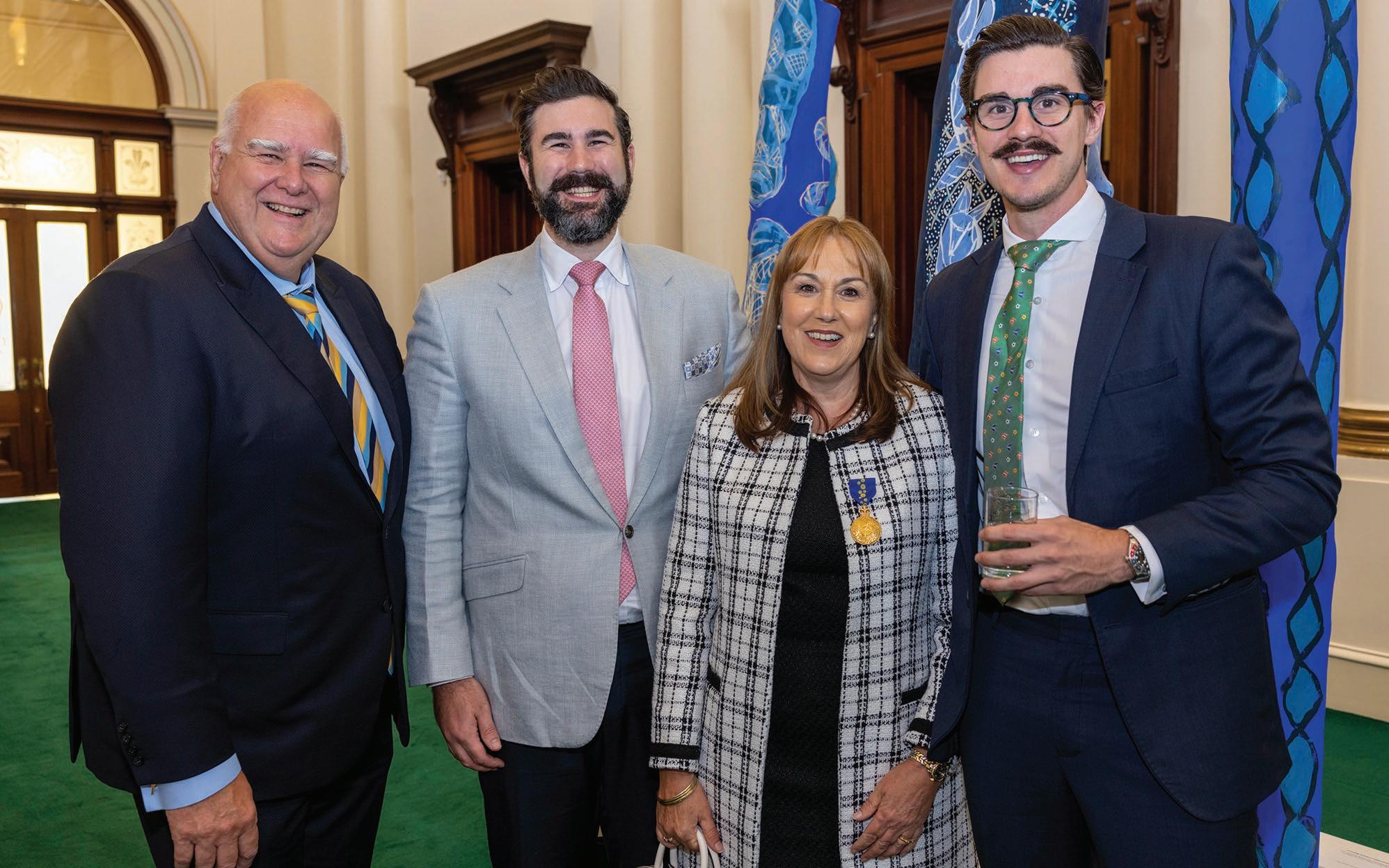
“I don’t think there is enough appreciation or kudos for the work we do.
SIMPLIFYING THE PROCESS
There has been no review of the Australian insolvency and bankruptcy laws for more than 35 years. In March, a panel of experts convened by the former Federal Government found the current regimen was “an impenetrable quagmire that is scary, complex and unknown”.
As a response, Senator Deborah O’Neill announced in late September that Federal Parliament’s Joint Committee on Corporations and Financial Services would undertake a review of these laws.
Erskine, as with most of the industry, including ARITA, is glad that there is finally movement on overhauling our insolvency laws. She is cautiously hopeful that the appetite for change will be strong enough to produce a meaningful outcome.
“If we are going to start from a blank page, and it would be lovely to think that this would happen, we need to deal with the overly complex arrangements that come from having two pieces of legislation.
“If we could create one simplified system that deals with both personal and corporate insolvency, everyone from practitioners to the average person that finds themselves in this unwieldy arrangement would benefit. I do think over the years with various amendments it has been made harder than it needs to be.”
Erskine also has issues with the amount of red tape that the industry has to deal with. Having worked on countless committees, she has heard calls from all quarters that many legislative requirements are overly burdensome, inefficient and ineffective.
“There are a lot of things we’re required to do under the legislation that don’t make a lot of sense or are not helpful,” says Erskine. “Some of our statutory reports, for example, run to many, many pages. The philosophy behind it is right, but we need to see if there’s a way to achieve the broad aim without overburdening both the practitioner and the
recipient, who often is lugged with this enormous file of information that they don’t ever read. “That’s one example, but there are a lot of others where we need to ask whether the process is the most cost-effective way of doing things and if the purpose of that regime is being met?
“A holistic approach with this is mind would relieve some of the frustrations felt by both practitioners and creditors while making the process simpler for people to understand.”
LIFTING ALL BOATS
Helping shape the profession from the inside is one thing. Now, after nearly four decades in and around the profession, Erskine is keen to see the broader community appreciate the work of insolvency and turnaround professionals. While insolvency headlines in papers and nightly news skew towards the sensational and celebrity, the work done to get businesses operating more efficiently is often overlooked.
“I don’t think there is enough appreciation or kudos for the work we do,” says Erskine.
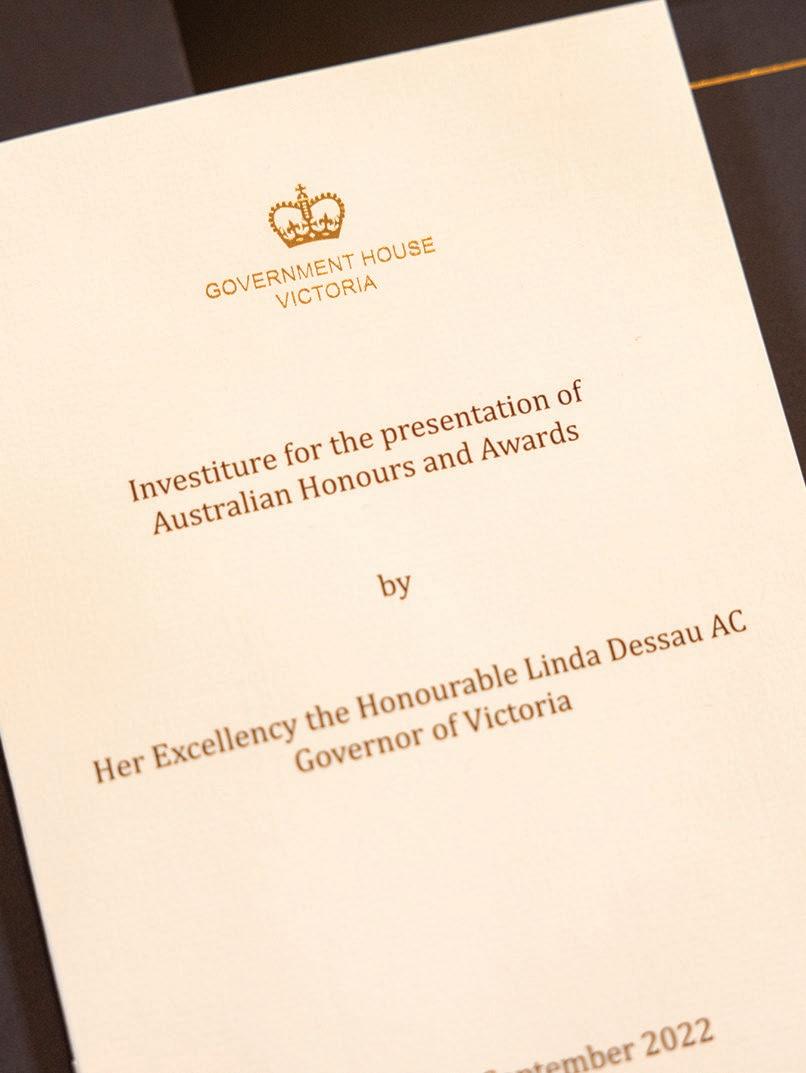
“Dealing with people who can be antagonistic or aggressive, who want to blame someone, isn’t easy and we tend to cop their ire. But our profession is entrusted with finding solutions when others can’t, and this takes an enormous skill set. Not just a technical and financial skill set, but a knack for understanding and empathising on a very human level.”
With this in mind, Erskine is clear that she believes her AM is a fillip not just for her but for all practitioners.
“I think all of us can take pride that someone has received an Order of Australia for the work they do in the insolvency sector,” she says. “It shows that the work we do is being valued beyond our fish bowl!”
On the day of her investiture, she received confirmation of this via an unlikely source. As she stood with her family and those of the other recipients, a stranger approached her. He wasn’t an award recipient but he wanted to offer a very specific compliment.
“When he said congratulations, I thought he was just being nice because I was standing there with a medal pinned to my chest,” Erskine says. “Then he said, ‘I’m an accountant and I’m just so happy to see another accountant get one of these awards, because hardly any of us get awarded for the work we do.’
“That’s probably true to some extent, and it’s certainly true that there are even fewer insolvency practitioners recognised for their efforts.”
Through her career, Erskine’s strength of character and humility has helped move ARITA and the profession forward. She’s typically effacing even when asked about her motivation for the extra tasks she has willingly taken on.
“It’s easy when you believe in something,” she says. “And I truly believe in the work that ARITA does, the members it serves and how it does this while protecting the public interest. The team at ARITA, led by a board of dedicated experts who volunteer their time, are remarkable for the amount of heavy lifting they do in law reform and representing their members.”
At its most basic, Erskine treats people the way she wants to be treated. And she wants that sort of philosophy to be handed down the line in all her professional and personal spheres.
“It gives me a lot of satisfaction to think that I’ve helped in any small way,” she says. “And I hope that it gives people following me the strength to do the same. It’s not about one person, it’s about many people embracing opportunity and bringing about change.”
Robyn Erskine’s ARITA experience
• President, 2011–2013
• Vice-President, 2007–2011
• Director, 2005–2019
• Representative, Board of Directors, INSOL International
• Member, Balance Taskforce
• Member, Small and Medium Practices Committee
• Former Chair, Discipline Review Committee
• Former Member, Professional Conduct Committee
• Former Member, ATO Liaison Committee
• Former Member, Nominations Committee
• Former Committee Member, Victorian/Tasmanian Division (20 years)
• Life Member, 2017
• Member, since 1992
Erskine is grateful to all the people who have brought about change in her professional life, from the men who “propped open the door so I could slip into the profession –because there were no females to do that back then,” to the men and women who are helping take the profession into the future with intelligence, warmth and commitment.
She says that in 10 years’ time, she’ll “be a feather duster” but is confident that the profession is in good hands. In the interim, she will continue serving the profession as best she can.
“All the work I’ve done has never been a chore because I believe in what we’ve been trying to achieve collectively. I know that I was the one to get the award this year but I honestly think that every ARITA member deserves an Order of Australia. I can’t wait to see many more from our profession recognised for all the incredible work we do.”
 JANYNE MOORE Director, In The Media PR
JANYNE MOORE Director, In The Media PR
MANAGING THE MESSAGE: HOW TO MAKE THE MEDIA WORK FOR YOU
 ORYANA ANGEL Director, In The Media PR
ORYANA ANGEL Director, In The Media PR
Media coverage is an effective way to promote your insolvency practice and even position yourself as an industry expert.
Experienced former journalists
Janyne Moore and Oryana Angel from In The Media PR (inthemediapr.com.au) gave us an insight into how the media works at the ARITA 2022 Small Practice Conference. The highly rated session provided some useful observations and tips for insolvency practitioners to consider when dealing with the media, and in this article we consider some of their key takeaways.
Q: TELL US ABOUT THE AGENCY AND WHAT YOU DO FOR YOUR CLIENTS.
Oryana Angel (OA): We realised that a lot of small business owners are really busy. They don’t have time to actively learn how to deal with the media, and how to find their stories and pitch their stories while also running their business.
So we started our agency to consult to businesses and help them tell their stories, and guide them on the things that media outlets would be interested in.
Janyne Moore (JM): We hear so many different stories from businesses working in insolvency that should be in the media, and that practitioners should be talking about as the experts.
Q: WHAT ARE SOME OF THE REASONS WHY AN INSOLVENCY PRACTITIONER WOULD WANT TO BE IN THE MEDIA?
JM: The big thing about the media is the audience reach. If you look at the Australian Financial Review, for example, it has 3.5 million daily readers in print and online. That’s a big audience that you’re reaching straight away with just one story featured there.
We know for a fact that it does have a major impact on the business for our clients who are featured in it regularly.
OA: One of our clients received a $1 million investor on the back of one story in the AFR. Another received a five-figure investment. Obviously, it’s a
“Being in the media does help to gain trust and credibility.
very business-focused audience, and they get hundreds if not thousands of hits on their website for certain stories.
JM: Consider titles like The Australian and the Daily Telegraph and the syndication of media now. If something features in the Daily Telegraph, for example, and it’s of national importance, it will be in the Courier Mail, the Adelaide Advertiser or the Northern Territory News. It will also be on news.com.au, which has an audience reach of 16.5 million.
TV news is often syndicated across the country as well. You’ve also got your other targeted outlets like Mining Monthly which you might want to focus on, depending what your target is.
Being in the media does help to gain trust and credibility. One of our clients spent six months talking to a big insurance company. He was a software developer and he could see problems with their online insurance claim process. He tried to get a conversation happening with them and they wouldn’t budge. He was a smaller operator, so they just wouldn’t give him the time of day.
He ended up being featured in a story in the AFR and he was also in the Sydney Morning Herald and The Australian. Off the back of that publicity he reached out to them again, mentioning some of the things that he’d been talking about in the media.
That gave him credibility, and they opened the door, had a conversation and then it moved on from there.
There’s also the benefits to brand awareness. Someone once said to me: ‘When you start making noise in the media, there’s an echo and it comes back.’ By engaging with the media you are putting yourself out there
and potentially opening the door to new opportunities. But if you don’t do anything, there’s going to be silence coming back.
Q: HOW CAN SEO BENEFIT A PRACTITIONER’S BUSINESS?
OA: SEO, or search engine optimisation, is all about getting your website higher up in Google search results. When someone searches for terms like ‘liquidation’ or ‘insolvency’, you want to be number one on Google. Statistically, very few people will go past the first page of a Google search. Media can really improve your SEO results. A powerful way of improving
your SEO is by getting external links out. Government websites are the holy grail with SEO links, but unfortunately they won’t link to private companies generally.
The next best thing for your SEO is getting links from a media organisation. We know news.com.au has over 16 million readers. If you can get a link from news.com.au to your website, which they do all the time, that’s huge for your business’ SEO.
It’s a really powerful tool to use the media to get those links back and boost the online profile of your business with better SEO.
•
•
• Identify, connect with and close new business opportunities
• Work for listed companies and SMEs across a diverse range of industries including energy, manufacturing, financial services, construction and retail providing advice in the areas of turnaround, restructuring and insolvency
•
•
• Payment of external training courses
• Senior level insolvency practitioner
• Registered Liquidator and or Trustee in Bankruptcy or will shortly be seeking registration
• CPA or CA qualified
• ARITA Professional Member
• A proven leader
• Tailored mentoring and training
•
• Hybrid work model
Media management feature
“You’re the experts in your field. You know what’s happening before the media does.
Q: WHAT ARE SOME KEY POINTS ON HOW TO DEAL WITH THE MEDIA?
JM: When using the media, in some instances you want to control the narrative of stories that are already in the news cycle, and in others you will want to proactively create stories that the media will be interested in.
When you are dealing with the media it’s really important to know you can take the time to think about your response. If you’ve got an appointment that is laying off workers, for example, and media get wind of it and a journalist approaches you, you’ve always got time to say, ‘Look, I’m going to come back to you. Can you just send an email with some of the questions you want to ask?’
That way you are working with them, but you are also being very strategic and saying, ‘Okay, I’m going to think about this or maybe get some outside help to figure out what the strategy is going to be.’
I find some journalists don’t understand what you do as receivers and liquidators, so you have to educate them. They work on stories of all different natures, so you can assist by just being there to give them some background on what often are complex processes in an insolvency matter.
Q: TELL US ABOUT CRISIS COMMUNICATIONS, WHEN THERE ISN’T TIME TO WORK OUT A STRATEGY.
OA: There are stories where journalists are like vultures. They
want the story and they’ll do anything to get it. Journalists often have to work really quickly. So you need to help them to understand the facts.
The key thing is, if you can have someone on board helping you, that’s really good. But if you can’t or you’re not at that point, the main thing is don’t shut up shop and hide. Try to have that conversation with the journalist.
In certain instances, and if you’re not sure of something, ask for the questions in an email and then take that time to think about a strategy for how you’re going to manage this situation. That’s the main takeaway in crisis management.
Q: HOW CAN INSOLVENCY PROFESSIONALS CONTROL THE NARRATIVE AND CREATE STORIES FOR THE MEDIA?
JM: One thing to look at is industry trends. For example, we hear a lot about businesses not being prepared for cyber attacks. Or bankruptcies: people are thinking, ‘We haven’t seen the mass closures of businesses that was expected. But is this coming? Is this something you can comment on?’ These are the kinds of stories the media will be interested in.
Media like to hear what the problem is and that it’s affecting a lot of people, and then you can position yourself as the solution. So you are explaining, as an expert, what businesses need to do.
You can do educational pieces about financial recovery. For example, what if your business is not in a good place? You can provide tips like, ‘Okay, what can you do if your business is heading towards liquidation? What are the five steps you can take as a business to try to stop that from happening?’
Think about things you’re talking about around the office. What you find interesting and are talking about amongst your colleagues is often an issue that the media will be interested in.
You are at the forefront, you’re the experts in your field. You know what’s happening before the media does, it’s actually you that can let them know.
Q: WHERE DO OPINION PIECES FIT IN TO THE MEDIA MIX?
JM: Every single insolvency practitioner could write an opinion piece this week about something that is happening in the industry. The media will welcome it because it’s good content for them.
OA: You don’t want to be selling your business in an opinion piece. If there’s a particular publication you want to be published in, just read some of the opinion pieces. Follow the format, and pick a topic and try to link it in with something that’s happening in the media.
JM: You are controlling the messaging. That’s what I love about it as well, because you are basically pitching yourself as the expert in your field. The journalists can’t change your words, so your messaging is completely controlled.
People reading it may relate to it and think, ‘I need to speak to this person, because they know what they’re talking about.’ You’re engaging with an audience on a different level.
Q: WHAT CAN PRACTITIONERS DO TO HELP THE MEDIA AND GET THE BEST RESULTS?
JM: We find it’s best to ask what the deadline for a response is upfront. They’ll be quite frank and say, ‘I need this by 3:30 or I need this by 10 o’clock.’ If you want to take the opportunity, you do need to move quickly.
Journalists are very time pressured. They’re working on so many stories and they’re working very quickly – more than ever now with the job cuts in the industry. So, just making it easy for them is the best way to get that coverage.
But then at the same time, if it’s likely to be a negative story and you don’t want the coverage, you
“By engaging with the media you are putting yourself out there and potentially opening the door to new opportunities.
can deliberately give them just a small amount of information. You can control the narrative in your messaging.
If you’ve got something and the journalists are sniffing – especially if it’s a story you know will get coverage and it is negative and something that you don’t want – by not giving them anything you are basically letting them go and run what they want.
You can just release a media statement. It only needs to be two paragraphs, two quotes. You might want to say very little, because you really want to kill the story and don’t want to add fuel to the fire. But by issuing that short statement your messaging is in there.
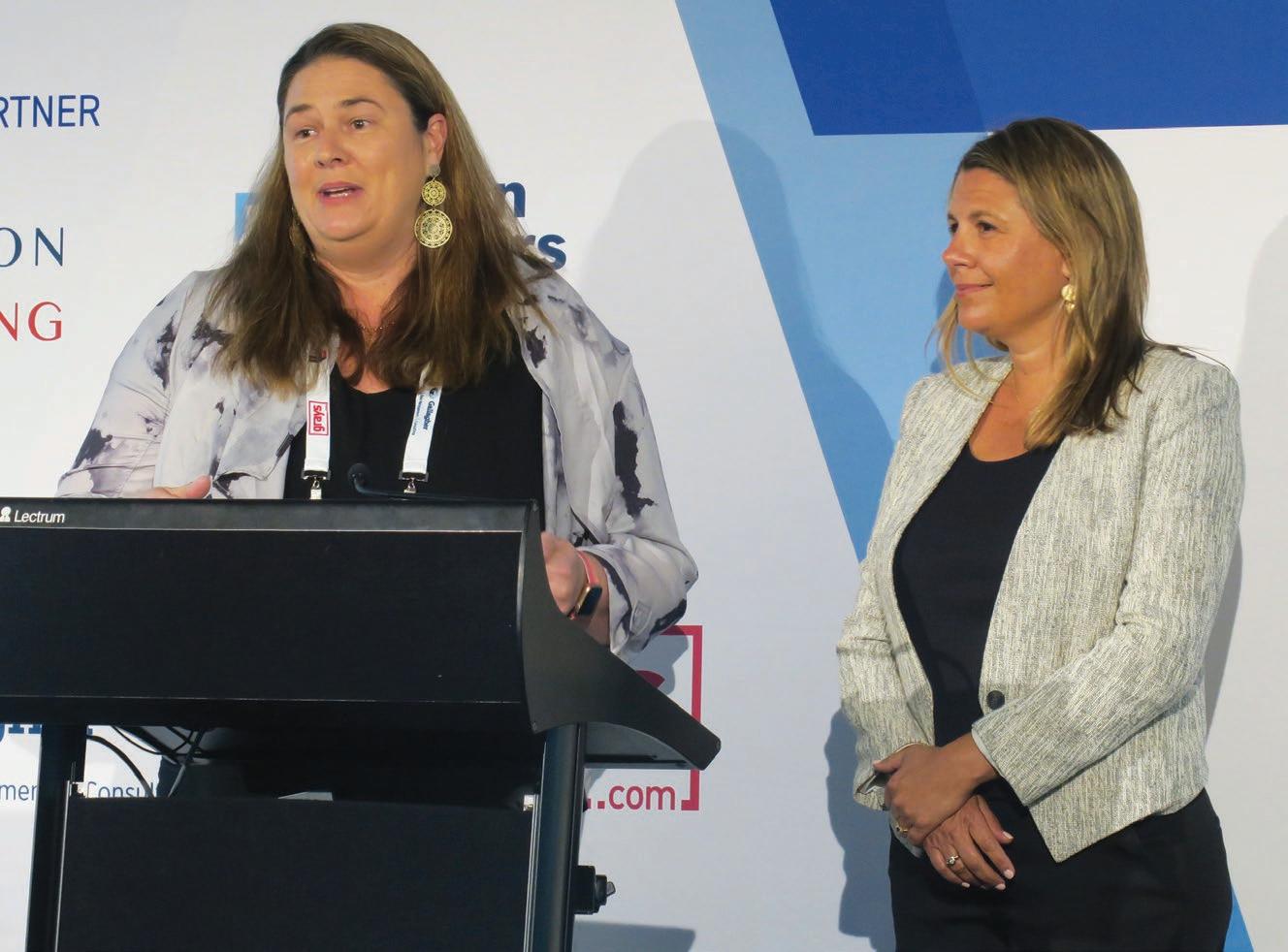
Depending on the situation –if you’re happy, if you want it in the media – it is sometimes best to get on the front foot and send that media statement out. At least have your statement ready if someone reaches out.
But if you are thinking the messaging actually works well for your business, you can put that out there and show that you’re being proactive and taking steps to do something positive.
Q: IS THERE SUCH A THING NOW AS TALKING OFF THE RECORD?
OA: I think there’s different levels. There’s no ‘off the record’ on camera. If the cameras are rolling, everything’s on the record. You just have to take a cautious approach.
JM: Most journalists will honour your off the record comments but it’s best to speak off the record with a journalist you already trust. You don’t need to go into specifics. Just educating them more around the process, rather than giving them the juicy details, is enough. You need to know who you can trust and just tread carefully.
Often you’ll find that once you start talking with some journalists you’ll create a really good relationship with them. And then when something happens in your industry and they know you’ve got that expertise, they’ll come to you and say, ‘Hey, have you got a comment in regards to this?’


YOUNG PROFESSIONALS AND DIVERSITY & INCLUSION
Two members of the ARITA NSW Young Professionals Committee give their perspective on the importance of diversity and inclusion for the insolvency profession.
Alister Yee and Lucinda Blue, from the NSW Young Professionals Committee, were recently co-panellists at a YP event with ARITA Board Member Kathy Sozou (Partner, McGrathNicol) and ARITA CEO John Winter.
Continuing on from the important themes discussed at that event, they offer their practical insights and experience in this Q&A that explores what diversity and inclusion means to the future leaders of the profession.
Q: HOW DID YOU GET INTO THE INSOLVENCY PROFESSION?
Alister Yee (AY): During my second year of university I made an application for work experience through the Chartered Accountants Achiever program. Through this program I was offered a placement at Star Dean-Willcocks, a mid-sized insolvency firm at the time.
I didn’t know much about insolvency back then, apart from a light brush with a corporations law subject at university. During my first week of work experience I worked on my first voluntary administration.
I enjoyed working with different stakeholders, obtaining an understanding of various companies in different industries and being a part of achieving the best possible outcome for creditors; as well as the investigations aspect of working on insolvency matters.
One word I can certainly use to describe working in insolvency is ‘interesting’, and that is the main reason why I’ve continued to work in this industry.
Lucinda Blue (LB): I finished university with a hunch that commercial disputes would be a practice area I would enjoy.
I didn’t do an insolvency law elective at university, so it was not something I had really thought about in terms of a potential practice area.
When I graduated, I took a non-rotating graduate role with an international law firm in their Restructuring and Insolvency team, which had been marketed to me as (and ended up being) a mix of general commercial disputes work, plaintiff class action work and insolvency-related disputes.
Having been exposed to a small amount of insolvency work in that group, I found it particularly challenging and interesting. I decided I wanted to focus my career in that direction, and I moved into a team more specialised in the restructuring and insolvency space. So, in short, I kind of fell into it!
Q: WHAT DOES DIVERSITY & INCLUSION (D&I) IN THE WORKPLACE MEAN TO YOU?
AY: To me, there has certainly been an increase in recent times of both awareness and implementation of diversity and inclusion practices in workplaces. My take on diversity is the mix of people, whether it be gender, cultural/ethnic background, age, race, religion, disability and sexual orientation; and inclusion is having that mix of diversity in the pursuit of common interests or goals.
I’ve also seen the link between diversity and inclusion and the success of organisations and corporations. I am aware of studies and research on, for example, the business case for diversity and the increasing likelihood of financial outperformance from having a diverse workforce.

“It’s about creating and fostering a profession or organisation that reflects the society we live in.
Diversity and inclusion feature
“Having a diverse mix of people can have a direct impact on better decision making.
But I see diversity and inclusion most importantly being about the key benefits and ethical aspects. Having a diverse mix of people can have a direct impact on better decision making from simply taking into account a variety of input from different perspectives and standpoints.
I believe it is also morally right to be inclusive and give people a sense of belonging.
I don’t see the movement of diversity and inclusion as going away any time soon. I think employees will vote with their feet by choosing workplaces that hold diversity and inclusion in high regard and move away from those that don’t.
LB: Diversity & inclusion has become a bit of a buzzword in recent times. As a result, there has never been a better time for employers and professions more broadly to be thinking about their D&I goals.
In some respects it’s easy to get caught up in the idea that D&I is all about gender, because women in the workforce gets so much airtime. Corporate Australia generally has taken big strides in the last few years with programs that seek to encourage female participation in the workforce, with increases in paid parental leave schemes, the advent of much more flexible working post-Covid and the introduction of 40/40/20 gender-based targets at senior levels.
These are all obviously great steps forward for female participation, which is incredibly important, but I think it’s important that we don’t limit our thinking. D&I has such broad application and includes things like cultural diversity, LGBTI+ inclusion, diversity in socioeconomic background, etc.
It’s about creating and fostering a profession or organisation that reflects the society we live in, so that we get the diversity of opinion, viewpoints and ideas that
don’t just reflect the ideas of one particular group of people with the same or substantially similar perspectives. This is relevant at all levels of expertise and will only work to better develop the sophistication of the profession or organisation long term.
Q: WHY IS VISIBLE DIVERSITY IMPORTANT FOR THOSE ENTERING THE PROFESSION, BOTH AT GRADUATE AND MORE SENIOR LEVELS?
AY: At a graduate level, I believe visible diversity is very important. It is quite a change to move from tertiary education into the workplace. From personal experience, when I started working in the insolvency profession it took a little bit of time to have that sense of belonging. I entered at a time where I saw insolvency to be very much a Caucasian and male-dominated industry.
This has certainly shifted, with a more diverse mix of people now working in the profession. Having said that, I believe visible diversity is important at the entry level for both the initial attraction and recruitment of talent as well as the retention of those in the preliminary years of their insolvency careers.
Visible diversity at more senior levels is also important. Again, from personal experience, around four years ago I decided to take up an opportunity with my current employer. This involved working with my present director, who is a female registered liquidator and registered trustee in bankruptcy of a similar ethnic background to me, along with a diverse team of professionals.
I am aware of a very small representative ratio of females who are both a liquidator and trustee; and that percentage is even smaller based on percentage by ethnic background. I chose this opportunity in a visibly diverse team and have certainly benefited and enjoyed working in a supportive team environment where each member’s ideas are shared and valued, while also developing my skills personally as an insolvency professional through strong mentorship.
LB: In terms of visibility at the graduate level, I think it is about shared experience and feeling a sense of collegiality and belonging within a peer group. Being the only person with a different perspective within a wider group of similarly oriented people is going to be a challenge for anyone.
A diverse cohort fosters an environment where different perspectives and ideas are more easily shared and discussed. Having a diverse graduate group also reflects down to students who are thinking about where they want to go, and whether they can see themselves as a part of a similar group. That’s a lot easier to do if there is someone with a similar perspective to yourself already there.
At the senior levels, I think it comes back to that same point: it is much easier to see yourself in a particular position, like a senior role in a professional services firm, for example, if there are people with similar backgrounds/perspectives to you already living and breathing it. It becomes a lot more realistic, instead of being an aspirational goal that could easily be put into the ’too hard’ basket.
A great example (although limited to gender diversity in this case) is in the traditionally male dominated legal profession. It is well known that there have been more female graduates from law schools than male graduates for some time. However, that has not been reflected at the senior levels.
As of October 2022, for the first time in history there is now a majority of female judges on the bench of the High Court of Australia. If that doesn’t say, ‘if I can do it so can you’, then I don’t know what does!
Q: WHAT IS YOUR PERSPECTIVE ON THE STEPS ARITA IS TAKING TO FOSTER D&I WITHIN THE PROFESSION?
AY: I believe ARITA’s efforts to foster D&I in the profession is a great start to something that is a huge commitment. Having a strategy document and forming a Balance Taskforce which sets out initiatives and outcomes is something I think will foster a diverse and inclusive profession.
More recently, our committee formed a D&I young professionals sub-committee to participate and be involved
in this overall strategy. Young professionals are the entry point, and we are the pipeline of the future leaders of the industry and will be able to bring change through both improved gender representation and addressing the ageing demographic of the profession.
While I’m aware this is only the start, I believe it would be beneficial to enhance the overall strategy by considering further objectives alongside the present focus on gender and age diversity: whether it be cultural/ethnic background, race, religion, disability or sexual orientation.
By doing this now, we will only strengthen our profession and place it in good stead for the future.
LB: The road to a fully diverse profession is a long one, and it’s not something that can be achieved in five minutes, or captured in a mission statement or action plan in a few hundred words. It takes time, energy and focus, and in setting up the Balance Taskforce ARITA is defining its focus on the issues. This is a great thing.
I think that in focusing on a steady diversification initiative, starting with gender diversity given how far behind the profession sits at the senior levels, and setting defined targets and action plans to achieve those targets, makes sense.
However, and I know ARITA is cognisant of this, I think it’s important that the profession (and the wider corporate community) ensure that there is a continued focus on D&I outside of just gender, and consider the importance of intersectionality across these dimensions, to ensure for example that programs to further gender diversity in the profession do not have the effect of benefiting only women of a particular background.
No doubt, in time steps will be taken to make further progress in areas outside of gender, because it will only benefit the whole industry.
 RICHARD COWEN Principal, Cowen Schwarz Marschke Lawyers
RICHARD COWEN Principal, Cowen Schwarz Marschke Lawyers
LIMITING LIABILITY


A review of recent cases shows the power of s 447A of the Corporations Act 2001 (Cth) to limit personal liability for administrators.
Given the considerable breadth of its power, s 447A of the Corporations Act 2001 (Cth) (the Act) has been described as a “magic-wand like provision” (Re Wallace-Smith; National Express Group Australia (Bayside Trans) Pty Ltd (receivers and managers appointed) (administrators appointed) and Others (2003) 46 ACSR 674, 676, [6]). This article provides some recent examples of the court’s powers able to be exercised under this section.
The section is of considerable scope which, on application, allows the court to “… make such order as it thinks appropriate about how this Part is to operate in relation to a particular company” (s 447A(1)). The purpose of providing the court with such broad and flexible discretionary powers was to fill any gaps in the legislative scheme of Part 5.3 of the Act, where the strict application of those provisions may not achieve the objects of Part 5.3 in the unique circumstances of every administration.
Pursuant to the section, the court may alter, supplement and/or modify express statutory provisions of the Act with regard to the specific circumstances of a particular company. One such application of the section is to limit the personal liability of administrators, which otherwise arises by operation of s 443A of the Act. The following cases illustrate that application.
ELLUME LIMITED
In the decision of Ellume Limited (Park (Administrator), in the matter of Ellume Limited (Administrators Appointed) v Evangayle Pty Ltd (Trustee) [2022] FCA 1102), the court considered the question of whether the administrators of Ellume Limited were justified in entering into and performing a funding agreement (and related security arrangements), and if so, if it was appropriate to exercise its power under s 447A of the Act to modify s 443A so as to limit the administrators’ personal liability as contemplated by the funding agreement.
Background
On 31 August 2022, the company was placed into voluntary administration, although Ellume USA LLC was not in any form of external administration. The company had limited readily available funds and impending liabilities in the amount of approximately $140 million (comprising unsecured trade creditor liabilities and other convertible notes).
At the time of the administrators’ appointment, the company had not granted any general security interests over their assets, although it had granted limited security interests over a small class of specific assets.
In exercising such powers, the court will have regard to the rights of the parties affected by administration: most importantly, that of creditors. Such an order is usually sought on the application of administrators, though it can also be brought by (inter alia) a creditor, ASIC or other interested persons of the relevant company.
Critically, undertaking those steps was intended to maximise the value of the business and therefore produce the greatest possible return for creditors, potentially provide return to shareholders, and further maximise the chances of retaining employees. legal update
Ellume Limited and its wholly owned subsidiary (Ellume USA LLC, incorporated in America) carried on the business of developing, manufacturing and selling diagnostic tests for infectious diseases to retail consumers (including the general public and healthcare professionals).
The administrators of the company, together with the directors of Ellume USA LLC, sought to maintain and continue trading the business as a going concern until the company could achieve a joint sale or recapitalisation. As part of this strategy, it was sought that the administration period be extended to allow a comprehensive marketing campaign to be undertaken, the negotiation of the terms of sale or recapitalisation, and also potentially for a deed of company arrangement to be entered into to give effect to the successful bid.
s 447A Corporations Act
“The powers of the courts under the section are not unlimited, and ought to be applied by reference to previous case authority.
As the forecasted cost involved in trading the business until the end of the anticipated voluntary administration period was significantly in excess of the company’s funds, the administrators sought to obtain funding to give effect to the aforementioned strategy. Without funding, the company would be forced to cease trading almost immediately.
In these circumstances, the administrators entered into a funding agreement with a syndicate of companies for a loan in the amount of $3.5 million for the purpose of advancing the strategy. Relevantly, the funding agreement limited the administrators’ personal liability to the funders to the extent of their indemnity and lien against the assets of the company, and was subject to, and conditional upon, the administrators obtaining the necessary orders permitting the limitation of their liability.
The administrators also sought an order pursuant to s 90-15 of the Insolvency Practice Schedule (Corporations) (IPS) that they were justified in entering in, and drawing down funds, pursuant to the funding agreement.
Judgment
Upon application, the court ordered that, pursuant to s 90-15 of the IPS, the administrators were justified in doing so, and that pursuant to s 447A of the Act, the operation of s 443A was to be modified such that if the indemnity in favour of the administrators pursuant to s 443D was insufficient to meet any liability arising out of the funding agreement, the administrators would not be personally liable under s 443A.
In making such orders, the court gave proper consideration to the circumstances in which the administrators entered into the funding agreement. Relevantly, Downes J contemplated that, had the funding agreement not been entered into, the business would have been forced to cease trading (which would likely have resulted in the termination of the employment of the majority, or all, of its employees), a dividend would have been paid to priority creditors, a nominal dividend would have been paid to general unsecured creditors (at best) and no return would have otherwise been provided to shareholders.
Downes J considered that the funding agreement was in the creditors’ interest as a whole, because it would allow the business to trade on and enable the administrators to pursue the proposed steps, with obvious benefits to creditors, shareholders and employees.
In particular, her Honour highlighted that the sale or recapitalisation of the business where the business continued to trade as a going concern would “… if achieved, result in a very significantly better outcome for creditors, shareholders and employees than the alternative. Indeed, undertaking the proposed steps could potentially see the greatest return to creditors, a possible return to shareholders and as many of the 325 employees as possible retaining their jobs” ([27]).
Accordingly, the court was satisfied that the orders sought by the administrators to limit their personal liability, and to find that they were justified in entering into and performing the funding agreement,
did indeed advance the objectives of Part 5.3A of the Act, and was not inconsistent with the object of the IPS set out in s 1-1(2).
Further, it is worthwhile to note that pursuant to s 588FM(1), the court also exercised its power under s 588FL(2) (b)(iv) of the Act to fix a registration time of security interests created or granted by the funding agreement, or the general security deed.
The court held that such order was just and equitable in circumstances where the funding agreement did not prejudice creditors, displace other security interests, was not objected to by any related or affected parties, and because the granting of the security interest under the general security deed was necessary to the funding agreement.
Without any such order, the security interests would have otherwise automatically vested in the company (and therefore become unenforceable against third parties) because those security interests arose after the appointment of administrators.
OVATO LIMITED
In the decision of Ovato Limited (Hill, in the matter of Ovato Limited (Administrators Appointed) [2022]
FCA 903), the court considered an application for similar orders to those sought in Ellume Limited: an order under s 447A of the Act and s 90-15 of the IPS to give effect to an agreement and to modify s 443 so as to limit the personal liability of the administrators.
Background
Ovato Limited was an ASX-listed company that conducted one of two national integrated print and distribution businesses operating within Australia and New Zealand. Administrators were appointed to Ovato and its 58 subsidiaries (Ovato group) on 21 July 2022.
From that point in time, the administrators sought to continue

“The court is likely to be receptive to the administrators not being exposed to additional personal liabilities provided the proposed arrangement is ultimately to the benefit of creditors.
s 447A Corporations Act
trading the business on a “business as usual” basis while they assessed viable options for a sale or recapitalisation of the business. At the time of the application, the administrators had been engaging in a sales campaign with expressions of interest to purchase the whole or part of the business or its assets, and were optimistic about the prospects of effecting a sale.
Similarly to Ellume Limited, the administrators of the Ovato group considered that in order to maximise the prospects of a sale of the business as a going concern (which would provide a greater return to creditors), the business should continue to trade-on during the sale campaign. The issue faced by the administrators was that the Ovato group had limited cash reserves, which they expected would restrict their ability to continue trading the business.
The administrators estimated that the level of funding that the Ovato group would require to continue trading until the end of the anticipated administration period for the conclusion of the sale process was quite a considerable sum. Understandably, the administrators were not prepared to be personally liable for the repayment of such sum as ordinarily prescribed by s 443 of the Act.
Relevantly, since around July 2020, the Ovato group had a financing facility agreement that was entered into with Scottish Pacific Business Finance Pty Ltd and a deed trustee (together, ScotPac).
Although, upon administration, the financing facility could be repaid to ScotPac in full without recourse to any other assets of the Ovato group or ScotPac securities, by virtue of the terms of the deed, the administrators were concerned that if the business failed to sell, or if the Ovato group companies were placed into liquidation, some of the pre-appointment receivables from customers would not
be recovered “… because customers will likely claim a set-off of the debt owing against damages for breach of their respective contracts” ([8]). This being an additional factor which inclined the administrators to continue trading on the business.
In these circumstances, the administrators negotiated a deal with ScotPac to extend the existing facility (by way of a Seventh Amendment Deed) to provide the required funding subject to a specified limit. In doing so, the funding enabled the administrators to continue trading the Ovato group business during the anticipated sale period. The funding arrangement was contingent upon approval by the court, and the administrators being excused from personal liability to repay such funding.
Accordingly, the administrators sought similar orders pursuant to ss 443A(1) and 447A of the Act, and s 90-15 of the IPS as in Ellume Limited, including that they were justified in entering into and performing the Seventh Amendment Deed and drawing down funds pursuant to the deed.
Judgment
The court made the orders sought by the administrators and ordered – similar to Ellume Limited – that pursuant to s 447A, s 443(1) of the Act was to be modified such that the personal liability of the administrators was limited to that prescribed under the Seventh Amendment Deed.
In making these orders, Stewart J regarded the objectives of Part 5.3A of the Act and the IPS (insofar as it related to Part 5.3A) as intending to “… provide for the business, property and affairs of an insolvent company to be administered in a way that maximises the chance of the company, or as much as possible of its business, continuing in existence, or, if that is not possible, results in a better return for the company’s creditors and members
than would result from an immediate winding up of the company” ([12]).
His Honour further considered that the court was empowered by s 90-15 of the IPS to make such orders as it saw fit in respect of the administration of the Ovato group, including to confer a level of protection on the administrators.
Specifically in respect of s 443A of the Act, his Honour acknowledged that it was common for administrators to seek orders limiting their personal liability in circumstances when it was necessary to borrow funds from a third-party financier to help fund the company’s ongoing trade during administration.
Relevantly, his Honour noted: “Where the continued trade is for the benefit of creditors, personal liability of administrators can be (and has been) excluded, including pursuant to s 447A of the Act, prior to any such liability being incurred” ([15]).
His Honour concluded that it was in the best interests of the creditors of the Ovato group for the administrators’ liability to be limited to that provided in the Seventh Amendment Deed, given that the funding prescribed therein enabled the continuation of the group’s business, therefore maximising the prospect of preserving the business with a view to its sale or recapitalisation.
Of note, his Honour found that: “Such a direction will offer the administrators a level of protection in respect of their decision to obtain funding to secure the ongoing operation of a national business whilst the prospect of a sale of the business continues to be actively explored for the benefit of creditors” ([20]).
LIMITATIONS ON s 447A
Although s 447A of the Act may empower the court to modify, supplement and/or override provisions of the Act, the powers of the courts under the section are not unlimited,
and ought to be applied by reference to previous case authority.
Furthermore, the exercise of the discretion will also turn on the appropriateness in the circumstances of each case, and relevantly how exercising that discretion will operate to benefit creditors.
KEY TAKEAWAYS
The decisions in Ellume Limited and Ovato Limited demonstrate that where an order is sought under s 447A of the Act to modify the operation of s 443A of the Act to exclude or limit the personal liability of administrators; the court is likely to be receptive to the administrators not being exposed
to additional personal liabilities provided the proposed arrangement is ultimately to the benefit of creditors.
Accordingly, it would be expected that an application seeking orders to this effect must establish that the proposed arrangement:
• advance, benefit or otherwise be in the interests of creditors
• enable the company’s business to continue to trade, recapitalised and potentially ultimately sold, for the benefit of the company’s creditors (i.e. permitting the administrators to make commercial decisions about the ongoing operations of the company in the creditors’ interests without the spectre of personal liability)
• not prejudice or disadvantage the company’s creditors, and
• be consistent with the objects of Part 5.3A of the Act.
Further, applicants should be mindful that the court will require parties who may be affected by the order (including ASIC and creditors) be given notice of such application, and the orders once made.
The court is also likely to insert in any order machinery provisions so that interested parties, such as creditors of the relevant company, have liberty to apply to discharge the orders on reasonable notice to the administrators.
 NICOLA BAILEY Barrister, 3 St James Hall
NICOLA BAILEY Barrister, 3 St James Hall
ANNULMENT v DISMISSAL ON REVIEW
A review of two cases shows that bankruptcy trustees need to exercise caution when incurring costs.
Bankruptcy trustees can ordinarily expect payment of their costs and remuneration as a priority payment in the administration. Even when a bankruptcy is annulled, the Bankruptcy Act 1966 (Cth) (Bankruptcy Act) preserves the ability of the trustee to apply vested property to payment of their fees.
But a trustee of an estate, where the sequestration order made by a registrar is reviewed and the creditor’s petition dismissed, is not so fortunate. Further, to the extent the trustee incurs costs in the administration after being put on notice of the review application, the trustee is at risk of the court refusing to approve such remuneration where caution has not been exercised.
These issues are considered by reference to the cases of Robson as former trustee of the estate of Samsakopoulos v Body Corporate for Sanderling at Kings Beach CTS 2942 [2021] FCAFC 143 and Porter as former trustee of the estates of Ghasemi and Kakhsaz v Ghasemi [2021] FCAFC 144.
TWO CASES
The facts in each case are set out briefly below.
In Samsakopoulos, the body corporate had issued a creditor’s petition based on non-compliance with a bankruptcy notice for judgment in the amount of $5,079.01. The debtor claimed she had paid $80 (to bring the debt below the statutory threshold) but only $77.25 was credited to her strata account, and the body corporate claimed a debt of $5,001.76 remained owing. A sequestration order was made by a registrar of the Federal Circuit Court, exercising delegated judicial authority. The trustee was appointed and, in his initial report to creditors, sought remuneration approval for up to $30,000 plus GST. legal update
Five months later, in April 2019, Ms Samsakopoulos brought an application to review the registrar’s decision and to annul her bankruptcy. In July 2019, the judge set aside the sequestration orders and dismissed the creditor’s petition (and did not annul the bankruptcy). The trustee appeared at that hearing but did not seek any orders.
In December 2019, the trustee brought an application, seeking orders including for payment of remuneration of $53,104.98 and an indemnity out of the assets of Ms Samsakopoulos to the extent that she was ordered to be liable for a proportion of the remuneration.
The application relied upon s 90-15 of Schedule 2 of the Bankruptcy Act, or in the alternative s 30(1)(b) of the Bankruptcy Act, and s 15(a) of the Federal Circuit Court Act 1999 (Cth) (FCC Act) (which provided that the Court had power to make orders of such kinds as it thought appropriate).
It did not rely upon s 104(3) of the FCC Act, which provided that the Court, on a review of a registrar’s decision, could ‘make any order or orders it thinks fit in relation to the matter in respect of which the power was exercised.’
The body corporate opposed the trustee’s application. It also submitted that Ms Samsakopoulos (and not the body corporate, as the unsuccessful petitioning creditor) should bear the costs of the administration.
The Court dismissed the trustee’s application, considering s 104(3) of the FCC Act but holding that no power was conferred by that section to grant the relief sought, and stating:

“The Court also emphasised that a trustee should exercise caution in undertaking further work and incurring costs where the validity of the sequestration order is in issue.
“It would appear to pay to consult with the debtor and consider whether an annulment application is possible and preferable.
The trustee sought to intervene in the proceeding, seeking an order that the bankruptcy be annulled pursuant to s 153B of the Bankruptcy Act or, in the alternative, that the debtors pay the trustee’s costs and disbursements, to the extent not already recovered from the estate, in priority pursuant to s 109 of the Bankruptcy Act.
The debtors, unsurprisingly, opposed such orders, and submitted that the trustee had not exercised due caution in incurring costs in the administration of the estates in circumstances where he was on notice of the review application. The debtors relied upon s 104(3) of the FCC Act in proposing an order that they pay the trustee’s reasonable costs from the date of sequestration to the date of notification of the review application (only).
The Court declined to make the orders sought by the trustee and instead dismissed the creditor’s petition. The trustee appealed.
KEY ISSUES AND FINDINGS
The Bankruptcy Act is silent as to the recovery of remuneration and costs, charges and expenses incurred by a trustee of a bankrupt estate when a sequestration order is set aside. The absence of such provision has led courts exercising jurisdiction under that Act to determine that the trustee has no entitlement to the recovery of remuneration and costs, charges and expenses incurred by trustee in such circumstances… In the event that a sequestration order is set aside, the former trustee in bankruptcy is left to his right of recovery at general law: Pattison at [238] citing Adsett v Berlouis (1992) 37 FCR 201 at 209-10; Flint v Richard Busuttil & Co Pty Ltd (2013) 216 FCR 375 at [49]-[52].1
The trustee appealed to the Full Court.
In Ghasemi, Druin Pty Ltd filed a creditor’s petition against Mr Ghasemi and Ms Kakhsaz. Sequestration orders were made by a registrar exercising delegated judicial power. The trustee undertook work in respect of his appointment, including completion of the sale of real property that had been exchanged by the debtors.
The debtors sought a review of the registrar’s decision pursuant to s 104(2) of the FCC Act. However, by the time of the hearing, the petitioning creditor’s debt had been resolved. Consent orders, setting aside the sequestration order and ordering the debtors to pay the petitioning creditor’s costs, were filed.
The same constituted five-judge bench of the Full Court of the Federal Court heard both appeals. Central to the decisions were the determinations of issues as follows:
1. The decision of a judge, on review of a registrar’s decision (being a decision following a hearing de novo), to dismiss a creditor’s petition, brings to an end the administration of the bankruptcy. The effect of such an order is that there is no longer any administration to be undertaken, and thus no estate to which provisions of the Act, such as the priority regime of payments in s 109, might apply.
2. The power conferred by s 104(3) of the FCC Act (which is now found in s 100(3) Federal Circuit and Family Court of Australia Act 2021 (Cth)) did not include a power to annul a bankruptcy which had already been brought to an end by a decision on review that the creditor’s petition be dismissed.
3. The Court has broad powers under s 104(3) of the FCC Act to make consequential orders to address what has occurred in the time between the initial registrar’s decision and the subsequent decision on review. Such orders include orders in respect of trustee remuneration and orders validating actions taken by the trustee during his or her appointment.
4. However, once put on notice of a bankrupt’s intention to apply for a review of the decision to issue a sequestration order, bankruptcy trustees should exercise caution in undertaking further work and incurring costs and expenses where the validity of the sequestration order is in issue, and in the usual case costs and expenses incurred contrary to such caution should be borne by the trustee.
RECOVERING FEES FOLLOWING A REVIEW OF SEQUESTRATION ORDER
In both cases, the Full Court held that the primary judges could not have made orders annulling the bankruptcies, having already reviewed the registrars’ decisions (the sequestration orders) and making orders dismissing the creditor’s petitions.
Logically, such a finding is unsurprising – on a rehearing de novo, if a creditor’s petition is dismissed, then there is no sequestration order and thus no bankruptcy to annul. The fact that an administration endured for the period of time between the original registrar decision and the review of that decision is irrelevant because the moment the creditor’s petition is dismissed (on review), the estate ceases to continue in existence.
However, that leaves the trustee in difficulty with respect to remuneration and expenses – as the trustees in both Samsakopoulos and Ghasemi found out. That is because, as
ESSENTIAL SKILLS
the primary judge commented in dismissing the trustee’s application in Samsakopoulos, unlike an annulment, where the trustee is permitted to apply any still-vested property towards payment of the costs of the administration (see for instance s 154(1)(b) of the Bankruptcy Act), there is no provision in the Bankruptcy Act for the payment, from the assets of the erstwhile bankrupt, of costs or remuneration of the trustee when a sequestration order is set aside or a creditor’s petition dismissed on review.
How then is a trustee expected to recover his or her fees for the work undertaken when they were validly appointed?
The answer, the Full Court found, lies in the broad powers granted to the Court pursuant to s 104(3) of the FCC Act. Those powers enable the Court both to determine, or fix the quantum of remuneration, and also to make orders as to the source of its payment: petitioning creditor, debtor, or borne by the trustee.

A series of intermediate level short courses that focus on a range of practical insolvency, bankruptcy, restructuring and insolvency law issues. Each course will delve in depth into a specific topic, providing you with valuable skills and understanding to implement back in the workplace. These courses are aimed at staff with 1 to 4 years’ experience, but may also appeal to more experienced practitioners who need to refresh their knowledge.
In Samsakopoulos, the Court ordered that the trustee’s costs up to the date of the dismissal of the creditor’s petition be borne by the petitioning creditor. Amongst other things, such an order was made on the basis that the trustee was obliged to continue with the administration once appointed (and thus incur costs), that the body corporate had adopted a “sharp practice” in relying on a debt barely above the statutory minimum and was ultimately unsuccessful in its application, and that there was no evidence that the debtor had been unreasonable in her dealings with the trustee (i.e. to lead to increased costs being incurred) or received any lasting benefit that should be brought to account.
PROCEED WITH CAUTION
The Court in Ghasemi set out nine matters of general approach for orders for trustee remuneration and expenses.
Whilst acknowledging that appropriate recognition should be given to the fact that the trustee must perform his or her obligations under the Act once appointed and fulfil a role pursuant to orders they did not seek, the Court also emphasised that a trustee should exercise caution in undertaking further work and incurring costs where the validity of the sequestration order is in issue. Costs incurred contrary to the exercise of such caution should be borne by the trustee.
The Court went further to give examples of the exercise of caution and cost minimisation strategies, suggesting that a trustee might seek an extension of time to comply with statutory obligations such as providing a report to creditors.
Indeed, the Court was critical of the trustee in Ghasemi for issuing a detailed report to creditors when he was on notice of the review application. No comment was made as to who would bear the costs of such an application for extension – ordinarily the costs would form part of the costs of the administration, attracting priority payment under s 109 of the Bankruptcy Act.
It might appear somewhat curious to incur costs in seeking an extension of time for the purpose of trying to avoid incurring costs (albeit one may expect the costs of an extension application might be less than the costs of a lengthy, detailed report). There is also the question of timing – if the review hearing is ultimately held prior to determination of the extension application, the latter is rendered otiose.
The Court also differentiated between costs for “general work” done, such as taking possession of property, collecting rent, assuming the conduct of a business or dealing with the debtor – being costs that are consequences of the sequestration order, but not “for the benefit” of the debtor in the relevant sense, and thus not necessarily recoverable; costs that are for the debtor’s particular benefit, such as arranging insurance for the ongoing advantage of the debtor, and which are ordinarily recoverable; and costs incurred due to the unreasonable behaviour of the debtor, which may be recoverable from the debtor.
Identifying work that is for the particular benefit of the debtor may require some finesse: for instance, in Ghasemi, the Court found that the trustee’s actions in effecting a real property sale were not additional to the usual administration responsibilities visited upon a trustee and thus that no special allowance for remuneration for those tasks should be made.
ANNUL AT ALL COSTS?
The trustees in both Samsakopoulos and Ghasemi unwittingly found themselves in a situation devoid of the inherent costs and indemnity rights afforded them by the Bankruptcy Act. Had the debtor in either case solely sought an annulment of the bankruptcy, the trustee would have been entitled to apply vested property to payment of remuneration pursuant to s 154(1)(b) of the Act.
Whilst not every situation will permit an annulment application to be made in place of a review of the registrar’s decision, it would appear to pay to consult with the debtor and consider whether an annulment application is possible and preferable. Indemnification from the petitioning creditor might also be considered.
If a trustee has been put on notice of a pending review application, care should be taken to minimise, where possible, costs and expenses incurred from that time. Consideration should be given to whether an application for deferral of statutory duties is appropriate.
File notes documenting the reasons for costs-related decisions, such as substantive actions to be taken in the administration or the decision not to apply for an extension of time, may be of assistance if the trustee later seeks remuneration approval from the Court and an order for the payment of costs incurred prior to a review of a decision to make a sequestration order.
Save time, stress & money with ARITA precedents
Get access to over 455 industry best practice letters, forms and checklists covering almost all aspects of corporate insolvency and bankruptcy.
Compliance – ARITA Specialists update the precedents for all legal and regulatory changes, so they’re always current and compliant. Checklists help you save time and minimise risk.
Efficiency – Create high quality documents and checklists with the click of a mouse. Improve consistency and minimise errors.
Flexibility – Microsoft Word and Excel templates allow you to add your firm’s branding. Customise documents with drafting options and alternative content.
register your interest
ARITA precedents are available to firms where at least 75% of partners/principals are ARITA Professional Members. Subscriptions run from 1 September to 31 August.
If you’re interested in licensing the ARITA precedents, please complete the registration form at arita.com/Precedents

To subscribe to ARITA precedents


legal update
DIVIDING ASSETS AMONGST CREDITORS
Who you name as the beneficiary under your life insurance policy could be a matter of life and …
THE ISSUE
There are generally accepted principles around bankrupts and life insurance policies that bankruptcy trustees are familiar with, including that:
• The proceeds of life insurance policies in respect to the life of the bankrupt, or the spouse/de facto partner of the bankrupt, are not available to creditors of the deceased bankrupt.
• The proceeds of life insurance policies are not available to creditors of the bankrupt spouse of the deceased.
However, there are exceptional circumstances.
An issue with one of our recent bankrupt estates identified circumstances where the proceeds of life insurance policies may ultimately vest in a bankruptcy trustee. This action depends on who is named as the beneficiary under the life insurance policy.
THE FACTS
In 2012, Mr Smith1 obtained a life insurance policy. In the life insurance policy, Mr Smith named ‘the legal personal representative, the estate of the insured’ as the beneficiary under the policy. In other words, the beneficiary of the life insurance policy would inevitably be the executor of his will. If he died without a will, the beneficiary would be the person who applied and obtained legal letters of administration of his deceased estate.
In 2015, Mr Smith made a will. He named his wife, Mrs Smith, as the sole person entitled to the residue of the estate.
Mr and Mrs Smith had a failed business venture and significant creditors. Mrs Smith was made bankrupt and Innis Cull and Gess Rambaldi were appointed as her trustees.
Mr Smith subsequently died and a creditor applied for the same trustee(s) to be appointed as trustees of his bankrupt deceased estate, with a specific request that we consider whether there was a claim to the life insurance policy proceeds.
THE QUESTIONS
Question 1: Were the proceeds of the life insurance policy available to the creditors of the bankrupt deceased estate of Mr Smith?
Answer: No
Question 2: Were the proceeds of the life insurance policy available to the creditors of the bankrupt estate of Mrs Smith?
Answer: Likely to be ‘yes’.
THE LEGAL FRAMEWORK
Life Insurance Act 1995
Section 205 of the Life Insurance Act 1995 provides that where money becomes payable pursuant to a life insurance policy upon a person’s death, the money is not available to pay the person’s debts.
There are three exceptions to this rule:
• The deceased had entered into a contract that provided expressly for the money to be applied to the debt.
• The deceased had charged the money with payment of the debt.
• The deceased gave an express direction in their will that the money be applied to the debt.

“Where a bankrupt is entitled to a life insurance payment, it is essential to identify how the entitlement to the payment arises.
None of these exceptions applied to Mr Smith. Accordingly, none of Mr Smith’s creditors could access the proceeds of the life insurance policy.
Does this change because his deceased estate was made bankrupt?
Bankruptcy Act 1966
Part XI of the Bankruptcy Act 1966 (BA) deals with the administration of deceased bankrupt estates.
Section 249 of the BA provides for the vesting of property in a deceased bankrupt estate. It mirrors the general vesting of property provisions in bankruptcy (s 116) and provides that the proceeds of a policy of life assurance are not divisible property in the bankrupt estate.
Accordingly, as trustee of Mr Smith’s bankrupt deceased estate, the trustee(s) had no claim to the proceeds of the life insurance.
Question 1 must be answered ‘no’.
The bankrupt estate of Mrs Smith
Section 116 of the BA provides that all property belonging to the bankrupt is divisible amongst their creditors.
Section 116 (2)(d) excludes:
(i) policies of life assurance…in respect of the life of the bankrupt or the spouse or de facto partner of the bankrupt
(ii) the proceeds of such policies received on or after the date of the bankruptcy (emphasis added)
Does the exclusion apply to the facts of this case?
Contrasting circumstances
To answer this question, it is useful to understand the circumstances where life insurance would clearly not be available.
• When Mr Smith took out the life insurance policy, it may have been structured slightly differently.
• Instead of nominating the beneficiary of the policy as ‘the legal personal representative, estate of the insured’, he could have specifically named the beneficiary as ‘my wife, Mrs Smith’.
Had he done so, the life insurance company would have paid the ‘proceeds of the policy’ directly to Mrs Smith. Regardless of her bankruptcy, s 116(2)(d)(ii) would obviously apply to exclude the proceeds of the policy from vesting in her bankrupt estate.
The key question we faced was whether the character of the life insurance proceeds changes by being paid firstly to the executor of Mr Smith’s deceased estate, and then disbursed to Mrs Smith in her capacity as a beneficiary, as a residual payment under his will.
Legal principles
We could not identify any case where this specific issue has been previously decided.
The decision in Cunningham (Trustee) v Gapes [2017] FCA 787 (Gapes) examined the question of whether the proceeds of a superannuation policy of a deceased, paid through an executor to the beneficiaries of the will, would be available to a trustee of one of the bankrupt beneficiaries.
Superannuation is protected in bankruptcy in a similar way to life insurance proceeds.
The court in Gapes indicated that the funds did not retain the character of fund payments after it became part of the deceased estate and there was a distribution from the estate to the bankrupt in his capacity as a beneficiary of the estate.
The court drew a distinction between tracing remedies, where the character of the fund remains identifiable, and the position where the fund becomes part of the residue of funds in the deceased estate to then be distributed to beneficiaries under the will.
Accordingly, the protection afforded to superannuation was lost when it emerged as a distribution by an executor under a will.
Application to life insurance
The facts in Gapes were nearly identical to the facts faced in Mrs Smith’s bankruptcy, save that we were dealing with life insurance and not superannuation.
We determined that the manner in which Mr Smith had structured the life insurance policy meant that the proceeds of the policy would lose their character as ‘protected monies’ when the proceeds were paid by the executor of the deceased estate as a payment of a residual entitlement to Mrs Smith, under the will of Mr Smith.
The resolution
When he took out the life insurance policy, it is almost certain that Mr Smith did not contemplate that his wife might be bankrupt when he
died. Had this issue been brought to his attention, we expect that he would have structured the life insurance policy differently to specifically name Mrs Smith as the sole beneficiary of the policy.
Had we pursued a claim through the courts, we are confident that the entirety of the life insurance policy proceeds would have been a vested asset of Mrs Smith’s bankrupt estate. Such an outcome seems unfair, particularly for Mrs Smith’s family and children.
Thankfully, creditors agreed that
an all or nothing situation was not the right outcome and authorised the trustees to agree to a fair compromise for the division of the policy proceeds with Mrs Smith, without the need for the issue to be decided by the courts.
KEY TAKE-OUTS
Given the broad protections afforded to life insurance, the natural inclination for trustees when life insurance is identified in an estate is to assume that it will not be available to creditors and that there is no point in further investigation. Given the experience
in this estate, we recommend that preliminary investigations are made.
Where a bankrupt is entitled to a life insurance payment, it is essential to identify how the entitlement to the payment arises. A payment directly from the life insurer to a named (but bankrupt) beneficiary will not be available to creditors.
If the payment occurs by way of an entitlement from the estate of the deceased, this may well be a payment available to the bankrupt estate. In all circumstances, the wording of the life insurance policy must be reviewed.
HELEN NEWMAN
Awillingness to help people and follow the example set by her parents of pursuing a career you have pride in set Helen Newman on the path to becoming an insolvency practitioner. Leadership with integrity underpins Helen’s long career working in restructuring, insolvency and turnaround.
How did you get into the profession?
I think I was like many young people when it came to selecting five university options after completing high school. I had a range of choices – architecture, business, OT. I knew I wanted a career that would involve helping people, problem-solving and had the opportunity for growth. Corporate recovery and insolvency seemed a lot more interesting, hands-on and practical than business services, audit or tax.
Who’s inspired you along the way either professionally or personally?
I’ve been inspired by both of my parents. In their professions they went above and beyond, and really cared about and had pride in what they did.
What’s the biggest success you’ve had in your career?
To me success comes in many ways. For example, the relief expressed by employees and gaining their cooperation when arriving on day one of the receivership or VA appointment, achieving interaction and an outcome with a bank customer or creditor when the relationship had broken, selling an asset warts and all, achieving a positive outcome out of a bad situation, and salvaging a business.
What’s the most satisfying appointment or assignment you’ve ever worked on and why?
Finding hidden assets, dealing with individuals with multiple identities, unravelling creative transactions and transfers of ownership. I also get a lot of satisfaction in negotiating and resolving disputes.
What are the biggest lessons you’ve learned in your career?
In our profession we deal with disputes, sometimes difficult people and competing interests. I have found that being respectful, responsive, firm and fair contributes to successful outcomes.
What’s the most rewarding part of your work?
Working with others and the opportunity to continuously learn, especially about different industries. As an IP you’re interacting with so many varied professions and stakeholders.
The variety you can experience in one day in your portfolio of engagements is also rewarding: you might be on a hospitality file in the morning and a manufacturing site in the afternoon.
If you could go back to the beginning of your career is there anything you would do differently?
I would have applied for my registration as a liquidator before I had my two children, as there is a significant disadvantage to meeting the criteria for 4000 hours at a senior level in the five years immediately preceding your application if you apply after taking maternity leave.
What’s the #1 skill you believe you need to be successful as an IP? Leadership with integrity.
What’s the best way for a firm to ride the peaks and troughs of demand for insolvency services?
Staff can be deployed into other practice areas if you work within a multidisciplinary firm: for example corporate finance and forensics. Boutique IP firms can adapt their skills to work with companies on performance improvement, asset management and sales, and negotiating better arrangements with banks and suppliers, as a few examples.
What do you think is the biggest opportunity for the profession?
To develop skills in our staff who are coming through the ranks that provide broader application than traditional formal insolvency work. For example, strategic and analytical skills for due diligence, performance improvement and restructuring engagements. To have earlier proactive engagement with companies experiencing financial distress to facilitate effective restructuring and turnaround in performance.
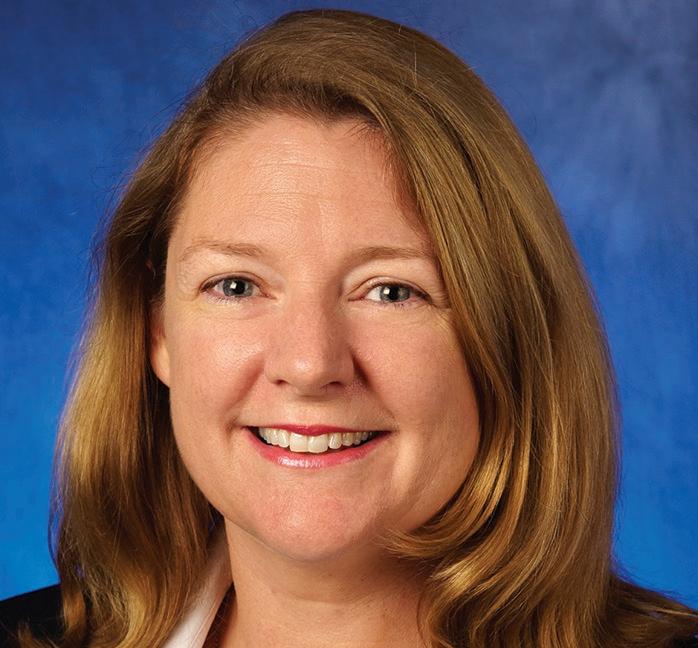
What are the greatest challenges you face working in the profession?
Managing the risk and obligations associated with the roles we undertake and price sensitivity.
How can IPs shift the negative perception of the profession?
Media coverage of successful case studies where there was a better outcome for a business, employees, creditors or a community would help the general public understand there is more to the profession than closing businesses and selling assets at auction.
What do you think needs to change in terms of the regulatory environment?
Streamlining of the regulatory environment, and reduction of the costs involved, would be greatly appreciated.
What are you passionate about outside of work?
I am passionate about doing fun activities with my two children and husband, and especially making the weekends count and organising catch ups and activities with a wide circle of friends and family, checking out new places, entertainment and enjoying the outdoors.
What might people who only know you in your professional capacity be surprised to know about you?
Following a trip to South Africa with friends I had a small part in establishing a charity called SAVE Projects Inc to provide support to a home for children that have been displaced, mainly due to human trafficking.
On the local front in Brisbane we assist RizeUp with an annual drive for back-to-school supplies for children of families affected by domestic violence.
INSOLVENCY BAROMETER: Q3 2022
ASIC continues to show an upwards trend in corporate insolvency numbers, with the highest number of quarterly appointments since September 2015.
Personal insolvency appointments are still well below pre-covid numbers, however the split between business and consumer debts remains consistent.
It is expected that insolvency numbers will see further increases with the ongoing collection activity by the ATO and the increased cash rate (4.85% as at 2 November 2022).
GOVERNMENT UPDATES
AFSA

A visible, contemporary and modern regulator.
 TIM BERESFORD Chief Executive, AFSA
TIM BERESFORD Chief Executive, AFSA
The Australian Financial Security Authority’s (AFSA) role is to contribute to Australia’s economic and social prosperity by overseeing the personal insolvency and personal property securities programs. Being an effective regulator requires more than enforcement and supervision. It requires us to look beyond the programs we administer to ensure that the role we all play stewards better economic and social outcomes. We recognise that Australians have experienced significant uncertainty over the past two years, and we acknowledge the collective response from practitioners and creditors to support individuals experiencing financial hardship. Thank you.
As practitioners, you provide sound advice and services, and ensure that clients feel heard, supported and safe. These services contribute to an economy where creditors feel confident to lend and credit continues to flow to businesses and individuals. AFSA, as the regulator, needs to optimise a fair and efficient financial system. To achieve this we deliver world-class services as a visible, modern and contemporary regulator.
A VISIBLE REGULATOR
During times of uncertainty, people look to regulators to seek reassurance. A visible regulator encourages engagement and is visible in its regulatory community – delivering balanced outcomes through good leadership, outreach and active listening.
Being trusted, accessible and visible is critical for effective regulation. We strike a balance between firm and fair using strengths-based regulation, encouraging positive conduct, highlighting good behaviours and sharing proven practices with practitioners. Through our surveillance
program we also keep watch, taking strong and decisive action against those that deliberately misuse the system.
As part of our commitment to being a visible regulator, we will continue to lead industry forums and actively listen through our different engagement channels. We have heard that you and other stakeholders want more insights, and we will publish more program data and insights on our website and social media channels.
A MODERN REGULATOR
To deliver world-class government services, our systems need to be simple and easy to use. This requires modernisation of our external systems – those you engage with – along with modernisation of our internal systems and processes.
We will continue to use feedback to enhance our services. In the past year, we have streamlined our online insolvency services, launched a new website and published resources for small businesses.
Delivering world-class government services requires investment in our own technologies and capabilities. AFSA is filled with talented, hardworking people who strive each day to deliver better outcomes for Australians. To make this easier, we are modernising our workplace and investing in an integrated system for personal insolvency administration and regulation.
A CONTEMPORARY REGULATOR
The key to being a contemporary regulator is to think beyond traditional regulation, broadening the regulatory toolkit and adopting innovative methods to achieve positive outcomes.
AFSA plays an important role in the broader economy and collaborates with other government agencies and regulators to deliver outcomes for our
shared clients. As we look beyond our regulatory programs to drive outcomes, we ask creditors and you – our practitioners – to be active in contributing to economic and social prosperity. We encourage you to disclose issues and we will continue to proactively share intelligence to correct harms and deliver proportionate regulatory responses.
As a contemporary regulator, we operate in a firm and fair manner, balancing the interests of our clients. We take a harms-based approach to determine our supervisory intensity and classify practitioners into tiers based on multiple risk factors. This approach ensures we have adequate resources to effectively focus on systemic risks and identify emerging harms. We are constantly surveying the evolving landscape and will act decisively when we identify deliberate misuse.
We are equipped to anticipate and respond to changing community expectations and needs. How we identify and respond to social and regulatory harms is outlined in AFSA’s Vulnerability Framework. Recent research we commissioned highlights that some female bankrupts have experienced domestic violence and coercive control. We all have a role to play to correct this harm. The framework should inform your approach, as practitioners, to identify and act on harms in our system.
My ambition is that AFSA is a visible, modern and contemporary regulator. My aim is that we are transparent in our approach and expectations, deliver world-class services, and use collaborative and innovative regulatory practices to contribute to Australia’s economic and social prosperity.
I look forward to sharing our progress with you.
ATO
Differential treatment of creditors in a DOCA and the obligations of bankruptcy trustees.
DIFFERENTIAL TREATMENT OF CREDITORS IN A DEED OF COMPANY ARRANGEMENT AND THE USE OF A CREDITORS TRUST
The Australian Taxation Office (ATO) continues to receive deed of company arrangement (DOCA) proposals that provide for different rates of return among unsecured creditors and often involve the use of a creditors’ trust.
Typically, the DOCA proposal involves unsecured creditors being divided into separate pools, with each pool paying a different rate of dividend.
Too often the DOCA proposals do not provide any reason for differentiating between unsecured creditors.
The ATO encourages administrators to provide reasonable grounds or justification for discriminating between unsecured creditors.
Failure to provide this information at an early stage may lead to unnecessary delay in creditors voting on the DOCA proposal. In the absence of the information being provided, there is a risk that creditors may vote against the DOCA proposal or, in the event the DOCA proposal is approved, could potentially leave it open to a legal challenge by a dissatisfied creditor.
When receiving a DOCA proposal involving differential treatment of unsecured creditors or the use of a creditors trust, the ATO encourages administrators to understand the rationale for differentiating between the creditors, and to provide an explanation and opinion on this in their report to creditors.
While the ATO accepts there can be a genuine benefit to creditors from a DOCA involving a creditors trust, we are continuing to see DOCA proposals involving creditors trusts which pose additional risks for creditors, particularly where the DOCA is effectuated before the amount available for distribution to creditors as beneficiaries of the trust has been fully paid. In those circumstances, the ATO will generally vote against the DOCA proposal.
BANKRUPTCY TRUSTEE OBLIGATIONS AFTER DERIVING CAPITAL GAINS ON DISPOSAL OF A BANKRUPT’S CGT ASSET
A trustee in bankruptcy is required to meet certain taxation obligations under s 254 of the Income Tax Assessment Act 1936. If you have derived income, profit or capital gains in a representative capacity as a bankruptcy trustee during the course of administering a bankrupt estate, you must apply for a TFN and lodge a tax return.
“Too often the DOCA proposals do not provide any reason for differentiating between unsecured creditors.
To apply for a TFN, you can either:
• apply online at abr.gov.au, or
• complete the form Tax file number – application for companies, partnerships, trusts and other organisations (NAT 3799).
When applying for a trust
TFN as a bankruptcy trustee, select ‘Discretionary Trust –Services Management’.
If you have not derived income, profit or capital gains in a representative capacity as a bankruptcy trustee, do not apply for a separate TFN.
For further information refer to the What bankruptcy trustees must do’ page at ato.gov.au
For general information refer to the insolvency practitioners’ section at www.ato.gov.au/insolvency

ASIC ASIC orders about creditor defeating dispositions.
In February 2020, the Treasury Laws Amendment (Combating Illegal Phoenixing) Bill 2019 received Royal Assent and introduced new measures designed to assist and enhance the ability for ASIC and registered liquidators (RLs) to combat illegal phoenix activity and recover property for the benefit of creditors.
Included in the measures was
a granting of power to ASIC under s 588FGAA of the Corporations Act 2001 (Cth) (the Act). The power allows ASIC to make an administrative order requiring either:
• property disposed of to be transferred back to the company, or
• the payment of money or transfer of property to the company that, in ASIC’s opinion, fairly represents the benefits a person received from the disposition or the application of proceeds from the sale of the property disposed of.
ASIC may only make an administrative order when:
1. a transaction satisfies the requirements of s 588FBD of the Act in being a creditor defeating disposition (CDD)
2. ASIC is satisfied that, if it were a court, it would be able to make an order under s 588FE(6B) of the Act, and s 588FG would not prevent it from making a corresponding order under s 588FF, and
3. the transaction occurred after 18 February 2020 and within 12 months of the relation back date.
In October 2021, ASIC published (on www.asic.gov.au) Information Sheet 261 ASIC orders about creditor defeating dispositions (INFO 261), which includes a template form for RLs to complete and submit to ASIC to formalise the making of a request.
INFO 261 outlines many of ASIC’s considerations in making an order, including the opportunity for RLs to make an application to the Assetless Administration Fund (AAF). An RL’s application will be considered if they have the potential to meet the requirements under the relevant AAF grant guidelines and can demonstrate that funded activities offer value with money.
ASIC has received few requests from RLs to make an order.
RLs may believe the disposition of property that constitutes a CDD may also factually constitute an Uncommercial Transaction or an Unreasonable Director Related Transaction. This makes court recovery proceedings, bringing alternative causes of action concurrently, more attractive.
Court proceedings may also be preferable if the RL’s claim involves a disposition of property that took place more than 12 months before the relation back day.
When making a request to ASIC, RLs need to provide sufficient evidence to allow ASIC to determine that a CDD has occurred and that, if ASIC were a court, it could make an order under s 588FE(6B) of the Act, and s 588FG would not prevent it from making a corresponding order under s 588FF.
 THEA ESZENYI Senior Executive Leader, Registered Liquidators, ASIC
THEA ESZENYI Senior Executive Leader, Registered Liquidators, ASIC
EXAMPLES OF REQUESTS
In one request made to ASIC, the individual who was suspected of receiving a benefit from the alleged CDD was overseas and could not be served notice of ASIC’s intention to make an order. Based on the available information, ASIC was not satisfied s 588FG would prevent it from making a corresponding order under s 588FF. The RL was advised to contact ASIC if the person returned to Australia, so that ASIC could consider proceeding with the request.
Another request relied on balance sheet line items (rather than other evidence identifying what specific assets existed). However, the company did not have possession of the assets and another operator was trading in the former business premises of the company. Insufficient evidence was provided showing which assets were disposed of, preventing ASIC from concluding that the assets were in possession of the new tenant.
Consequently, ASIC was not satisfied that a CDD had occurred in favour of the new tenant, nor that an order could be made.
When requesting ASIC to make an order in relation to a CDD, RLs should carefully consider the information and guidance in INFO 261 and provide the information requested in the template request form.
For more information or assistance, email ASIC.CDD.requests@asic.gov.au before applying.
FAIR ENTITLEMENTS GUARANTEE
FEG and insolvency practitioners work together to deliver outcomes in complex cases.
Large cases can be a double-edged sword: on the one hand records are often of a good standard to verify entitlements, but small problems can be magnified with increased case scale to make claim assessment complicated and difficult.
In these situations, close work between FEG and insolvency practitioners (IPs) can help resolve complex issues and facilitate accurate and timely claim assessment.
A great example of this occurred recently in relation to a large case from the manufacturing sector. On the surface, the treatment of redundancy entitlements was expected to be straightforward. It was expected that redundancy entitlements would conform with a sliding scale approach (often NES provisions) or where the entitlement is altered by virtue of a governing instrument, or the industry in question.
However, during the assessment process it came to light that the company paid redundancy at four different rates due to the numerous allowances payable. These allowances were dictated by the relevant governing instrument (i.e. modern award or enterprise agreement) and were dependent on the claimant’s role, work performed and physical location.
The FEG claim assessor and the IP collaborated closely to work through these issues. Using the verified service dates and wages figures provided by the IP, the FEG Claim Assessor assembled and presented an accurate
assessment of the redundancy figures, inclusive of allowances.
The IP reviewed the FEG Claim Assessor’s explanation of how the redundancy entitlement was calculated and, should they have any future similar cases, now has this as a resource.
In this case, the cooperative effort led to claimants being paid the redundancy entitlement they were owed in a timely manner.
O’DWYER DECISION
The Federal Court recently handed down its decision in Secretary, Attorney General’s Department v O’Dwyer [2022] FCA 1183. The Court upheld the department’s appeal from a decision of the AAT in relation to the approach to be taken in assessing whether a company director is also an employee, and consequently whether the director’s brother was an ‘excluded employee’ under the FEG Act.
In its decision, the AAT concluded that, although the director took responsibility for certain operational matters, he was ‘essentially an equity partner … who received regular dividend payments’. In making this finding, the AAT applied a multifactorial approach, rather than first seeking to ascertain the terms of any contractual relationship between the director and the company.
Applying the principles set out in the recent High Court decisions in Jamsek and Personnel Contracting, the Federal Court set aside the AAT’s decision. The Federal Court found that

the focus in determining whether there is an employment relationship must be on the legal rights and obligations making up the contractual relationship between the parties, rather than the history of the relationship.
This approach must be applied regardless of whether there is a written or oral contract between the parties, although in the case of oral contracts there is greater scope to consider subsequent events as part of identifying the terms of the oral contract.
DELAYS IN PROCESSING PAYMENT OF INVOICES
As a result of the Machinery of Government changes that saw FEG move from the Attorney-General’s Department to the Department of Employment and Workplace Relations (DEWR), there were delays in processing payment of invoices for both FEG and FEG Recovery programs.
These issues have been resolved and the payment of invoices has returned to normal processing times. Please continue to send invoices through the channels you currently use. Your patience was appreciated throughout this process, and we apologise for the delays and any impact this caused our valued partners.
Please also be aware that our contact details have recently changed. Please refer to the FEG page on the new DEWR website for updated contact details www.dewr.gov.au/ fair‑entitlements guarantee
GOOD PRACTICE
 KIM ARNOLD Policy & Education Director, ARITA
KIM ARNOLD Policy & Education Director, ARITA
 NARELLE FERRIER Technical & Standards Director, ARITA
NARELLE FERRIER Technical & Standards Director, ARITA
A quarterly round-up of the ARITA Specialist Team’s work on law and practice issues.
As 2022 winds downs, the ARITA Specialist Team continues its work on advocacy, including the Parliamentary Joint Committee on Corporations and Financial Services inquiry into Australia’s insolvency laws.
SUBMISSIONS & ADVOCACY
Review of the Australian Securities and Investments Commission Industry Funding Model
On 28 September 2022 Treasury issued a discussion paper on the Government’s review of the Australian Securities and Investments Commission (ASIC) Industry Funding Model (IFM). The review is focused on identifying refinements to the IFM that may be required to ensure its settings remain appropriate.
The discussion paper notes that ‘ASIC is one of the few regulators that recovers regulatory costs via industry levies using an ex-post mode’ and, disappointingly, ‘considers that the ex-post model remains appropriate for ASIC’s industry funding arrangements given the difficulty for ASIC to determine in advance and with relative accuracy how much it will expend on each sub-sector each year’.
While the review will not consider changes to the ex-post nature of the
IFM, ARITA continues to raise its concerns in this respect, along with many other issues for the profession as a result of the IFM.
ARITA has made a submission in relation to the review and participated in the ASIC IFM Roundtable discussion held in Sydney on 20 October 2022.
A copy of ARITA’s submission is available on the website.
Rationalisation of ending ASIC instrument measures
ARITA made a targeted submission in response to Treasury’s exposure draft legislation and explanatory material to move matters in legislative instruments made by ASIC into the primary law and regulations.
The submission again highlights that the general exemption from AFSL licensing requirements for registered liquidators and trustees in bankruptcy only applies to specific types of insolvency appointments while the appointee is “performing functions, or exercising powers, in any of the [listed] capacities or circumstances”.
The submission seeks an exemption for registered liquidators or trustees who provide financial counselling and financial capability services outside of a formal appointment. It notes that
registered liquidators and trustees are experts in assisting individuals and small businesses who are in financial difficulty to resolve their problems, and that the legislation must accommodate their ability to provide this advice outside of a formal appointment without requiring licensing.
A copy of ARITA’s submission is available on the website.
Exemptions for litigation funding schemes
ARITA made a submission in the response to the exposure draft regulations and explanatory statement which propose changes to the regulation of litigation funding schemes under the Corporations Act 2001
The submission considers whether the proposed amendments address the concerns that were raised by ARITA with Treasury in 2020 following the commencement of the Corporations Amendment (Litigation Funding) Regulations 2020, and noted our concern that litigation funding arrangements are currently only excluded from the application of the National Credit Code due to temporary relief granted by ASIC, that has been in operation since 2013 and is due to expire on 31 January 2023.
LIAISON MEETINGS
Members are welcome to raise any issues of concern with ARITA to be discussed with any of the bodies that ARITA meets with. These issues should be directed to the ARITA Specialist Team: SpecialistTeam@arita.com.au
Organisation Update
The Treasury We continue our productive relationship with the Treasury and attended the ASIC IFM consultation on 20 October 2022.
Attorney-General’s Department
John Winter and ARITA’s Special Advisor, Warren Mundy, met with the Attorney-General, the Hon Mark Dreyfus KC MP, on 14 October 2022.
AFSA/ASIC The latest AFSA/ARITA/ASIC liaison meeting was held on 13 September 2022.
FEG ARITA continues its productive relationship with FEG and liaises on an as-needed basis. Now that the new government has settled in, we will escalate our concerns regarding FEG Recoveries expectations for disclosures to the court in applications to extend the convening period for VAs and detailed information requests regarding remuneration approvals.
ATO
The ATO has issued guidance on how it will interpret the application of s 254 of the Income Tax Assessment Act 1936 to capital gains made by a bankruptcy trustee during the administration of a bankrupt estate. ARITA is deeply dissatisfied with the ATO’s position and has written to the Treasurer, Attorney-General and Inspector General of Taxation setting out our concerns and proposing a solution to ensure a fair outcome for all stakeholders.
MBR BAG Kim Arnold continues to attend the regular Modernising Business Registers Business Advisory Group meetings.
ASBFEO ARITA has met with staff from the Australian Small Business and Family Enterprise Ombudsman (ASBFEO) to discuss opportunities for reform to the small business restructuring and simplified liquidation processes.
Consistent with the proposals made by the Australian Law Reform Commission as part of its current review of the Legislative Framework for Corporations and Financial Services Regulation, ARITA’s view is that legislation should, wherever possible, be complete and standalone, and not reliant on instruments issued at the discretion of the regulator in order to function as intended.
A copy of ARITA’s submission is available on the website.
ARITA GUIDANCE & PRACTICE ALERTS
From reviewing recent developments in practice and case law, along with assessing the queries made to ‘Ask ARITA’, ARITA’s Specialist Team prepared the following guidance notes and practice alerts to assist members:
Practice Alerts:
• ATO releases guidance on CGT in bankruptcy
• Personal insolvency indexed amounts update (20 Sept 2022)
• Amendments to Victorian Environmental Protection Act
• ASIC guidance for Queen’s memorial public holiday
• AFSA guidance for Queen’s memorial public holiday
• Legal status of directors who do not hold Director ID
• Queen’s memorial public holiday
• ATO finalising position on CGT for Trustees
• Personal insolvency exemplar behaviour case studies
• ROCAP Version 2
MEMBER CONDUCT & QUALITY ASSURANCE
For the year-to-date to 14 October 2022, 14 complaints have been received and one concern has been identified for 2022. One complaint and four concerns are currently with the Professional Conduct Committee for initial review/guidance (2) or formal disciplinary action (3).
A summary of the complaints and concerns currently being dealt with by ARITA, including any matters being considered by the Professional Conduct Committee, is provided below.
Details of the outcome of complaints and concerns are provided on the ARITA website, either on a names or no-names basis, where it is
considered appropriate. Full details of ARITA’s complaints and concerns processes are available on the ARITA website.
ASK ARITA
If you have a question related to the law and practice of insolvency, including the application of the ARITA Code of Professional Practice, please contact the ARITA Specialist Team via ‘Ask ARITA’ on the ARITA website: arita.com.au/ask ARITA
Asking your questions via Ask ARITA ensures that your query is seen by all members of the Specialist Team and that a response is provided in a timely fashion.
* Including disrepute investigations.
This service is for Professional Members only. We cannot answer queries from graduate and student subscribers or staff who email on behalf of professional members.
Q&A
ARRANGEMENTS, DEFERRALS & THE ASSESSMENT OF SOLVENCY
 NARELLE FERRIER Technical & Standards Director, ARITA
NARELLE FERRIER Technical & Standards Director, ARITA
What is the ‘due date’ for the underlying tax-related liability?
It is not uncommon for financially distressed taxpayers to enter into instalment arrangements with the Australian Taxation Office (ATO) for the payment of tax-related liabilities, but this has critical solvency implications for the taxpayer.
Deferrals may also be granted by the Commissioner of Taxation, but these are less common.
Q: WHAT IS THE IMPACT OF ATO PAYMENT ARRANGEMENTS ON THE ASSESSMENT OF SOLVENCY?
A : While the entering of an instalment arrangement or payment plan may generally alter the due date for payment of a liability, that is not the case with ATO payment arrangements.
Notwithstanding any negotiated payment plan with the ATO, the whole of the tax-related liability remains due and payable – not just the instalment that is due.
Section 255-15 of the Taxation Administration Act 1953 (Cth) (TAA) specifically provides that the arrangement does not vary the time at which the amount is due and payable.
255‑15 To permit payments by instalments
(1) The Commissioner may, having regard to the circumstances of your particular case, permit you to pay an amount of a tax-related liability by instalments under an arrangement between you and the Commissioner (whether or not the liability has already arisen).
(2) The arrangement does not vary the time at which the amount is due and payable.
‘Tax-related liability’ is defined in s 255-1(1) of the TAA to be a ‘pecuniary liability to the Commonwealth arising
directly under a taxation law (including a liability the amount of which is not yet due and payable)’.
The definition of ‘arrangement’ is drawn from s 995-1 of the Income Tax Assessment Act 1997 (refer TAA s 3AA(2)) and means:
any arrangement, agreement, understanding, promise or undertaking, whether express or implied, and whether or not enforceable (or intended to be enforceable) by legal proceedings.
A liability is not recorded by the ATO in an integrated running balance account until it is due and payable; and if taxation liabilities are being met in the ordinary course, the balance of the account will generally be zero.
As noted in the decision of Clifton (Liquidator) v Kerry J Investment Pty Ltd trading as Clenergy [2020] FCAFC 5, the authorities of Hall v Poolman [2007] NSWSC 1330 and Smith v Boné [2015] FCA 319 support findings that a payment arrangement with the ATO does not cause a debt which was due and payable to cease to be due and payable, and that such a debt is not contingent but remains presently payable.
The operation of the section must be considered by practitioners when undertaking solvency assessments, with the total of the tax-related liability being taken into account. This is ordinarily detailed in the taxpayer’s integrated running balance account maintained by the ATO.
It should also be considered with providing solvency advice outside of a formal appointment, with a number of taxpayers having entered into instalment arrangements with the ATO during the pandemic.
Q: WOULD IT BE DIFFERENT IF THE TAXPAYER HAD A TAX-RELATED LIABILITY DEFERRED?
A : Section 255-10 of the TAA 1953 provides the Commissioner of Taxation with the power to defer the time at which an amount of a tax-related liability is, or would become, due and payable.
The power can be exercised in relation to a particular taxpayer or classes of taxpayers.
255‑10 To defer the payment time
Deferrals for particular taxpayers
(1) The Commissioner may, having regard to the circumstances of your particular case, defer the time at which an amount of a *tax-related liability is, or would become, due and payable by you (whether or not the liability has already arisen). If the Commissioner does so, that time is varied accordingly.
(2) The Commissioner must do so by written notice given to you.
Deferrals for classes of taxpayers
(2A) The Commissioner, having regard to the circumstances of the case, may, by notice published on the Australian Taxation Office website, defer the time at which amounts of *tax-related liabilities are, or would become, due and payable by a class of taxpayers (whether or not the liabilities have already arisen).
(2B) If the Commissioner does so, that time is varied accordingly.
(2C) A notice published under subsection (2A) is not a legislative instrument.
In such instances the deferred tax-related liabilities would not be considered due and payable when making an assessment of solvency.




30 years of servicing the BIF market and understanding your requirements to value and remarket assets securely and e ciently.
$5 billion worth of assets have been valued over the last 5 years ranging from all plant & equipment assets such as mining, aircraft, marine and catering equipment.
Sold over $650 million of finance/insolvency assets in the last 5 years alone.
$850M worth of assets sold annually nationally via our online platform.
valuers ASA,

3+

INSOLVENCY CASE LAW
Recent insolvency cases of note: August 2022 – October 2022.
Public examinations – liquidators’ right to seek production of commercially sensitive information and documents
Pearce, in the matter of Bandiera Holdings Pty Ltd (Receiver Appointed) (in liquidation) v Bandiera Holdings Pty Ltd [2022] FCA 876
An accounting firm applied to discharge a summons for public examination that required production of their commercially sensitive professional indemnity insurance policy.
• A company’s ‘examinable affairs’ under the Corporations Act 2001 (Cth) (Corporations Act) includes its property, which extends to the existence and value of any potential causes of action against third parties.
• Satisfying a court that a proposed examinee can likely give information about the company’s ‘examinable affairs’ (which s 596B of the Corporations Act requires before a summons can be issued) is a relatively low bar.
• Mere assertions that there is no claim against the person summonsed and/or that the person’s interaction with the relevant company was limited are insufficient to challenge a summons, particularly if the liquidator adduces some contrary evidence (which can include material produced in answer to a summons).
• An undertaking from liquidators to keep documents produced by an examinee confidential may tip the balance in favour of issuing a summons where those documents are confidential or commercially sensitive.
Guest contributors:
NIRUPA MANOHARAN, Partner, Mills Oakley – ARITA (WA) Division Committee Chair
ALEX MYERS, Senior Associate, Mills Oakley
Reasonable to pursue an unreasonable director‑related transaction in a solvent liquidation
Aviation 3030 Pty Ltd (in liquidation) v Lao, in the matter of Aviation 3030 Pty Ltd (in liquidation) [2022] FCA 458
A liquidator of a solvent company can pursue unreasonable director-related transaction claims under s 588FDA of the Corporations Act for the benefit of the company’s shareholders.
• The term ‘creditor’ in the context of an order made under s 588FF(4) of the Corporations Act, which enables recovery of the lost benefit of an unreasonable director-related transaction ‘for the benefit of the creditors of a company’, extends to shareholders in the case of a solvent company in liquidation.
• The court’s power to grant relief pursuant to a claim under s 588FDA is not conditioned by any requirement that a company be insolvent. A remedy under s 588FF(4) is enlivened when a transaction meets the definition of an unreasonable director-related transaction within the meaning of s 588FDA, irrespective of the solvency of the company.
Guest contributors:
CARMEN BOOTHMAN, Partner, HWL Ebsworth Lawyers
– ARITA (WA) Division Committee
CAITLIN RUMAC, Graduate, HWL Ebsworth Lawyers
SOPA and insolvency intersect again
Re Nicolas Criniti Pty Ltd (in liquidation) [2022] NSWSC 1149
The New South Wales Supreme Court has recently considered the adjudication of a proof of debt in the context of a Building and Construction Industry Security of Payment Act 1999 (NSW) (SOPA) adjudication application on foot as at the relation back date.
In an industry facing pressure, this case provides useful clarity on the intersection between the Corporations Act and state security of payment legislation, serving as a further incentive for builders to act promptly in issuing payment claims and activating the adjudication process.
• The Court restated the requirements for a debt to be provable in a liquidation. In adjudicating the proof of debt, the liquidator is required to: – identify the substantive obligation which the debt or claim represents, and – determine whether the circumstances reveal sufficient evidence of the basal fact necessary to bring the substantive obligation into being.
• The SOPA provides a mechanism for the determination and payment of enforceable debts. The payment mechanisms are not enlivened until the debt is enforceable under the SOPA. This requires certain preconditions to be satisfied. Where an adjudication application has been made, the determination of that application is a precondition.
• Accordingly, where an adjudication application has been made under the SOPA, the associated debt does not constitute a ‘statutory debt’ until a determination has been made.
Guest contributor:
KATHERINE PAYNE, Partner, Hall & Wilcox
– ARITA Vic/Tas Division Committee
Claim under D&O policy defeated where a director’s company benefited from the director’s breach
Hakea Holdings Pty Ltd v McGrath (No.2) [2022] FCA 995
A recent decision from the Federal Court is a useful example of how exclusion clauses in a directors and officers liability insurance policy will apply in practice when bringing a claim against a director for breaches of duty. The case considered the scope of a ‘known circumstances’ exclusion and a ‘personal advantage’ exclusion.
• When pursuing claims against a director in the expectation that the claim will be paid by an insurer under a D&O policy, it is essential to consider all of the exclusions applicable under the policy.
• Courts construe insurance policies liberally, and will be reluctant to interpret exclusions in a way that will give them such a broad application that they would defeat the operation of the policy.
• While the interpretation of an insurance policy depends primarily on the precise terms of the policy, in many cases a ‘known circumstances’ exclusion will be read down to only exclude liability if the insured was aware that a legal liability might flow from the ‘circumstances’.
• Where a D&O policy excludes liability for claims based on conduct that gave the director an ‘advantage’ or benefit, this will include indirect benefits and advantages, such as benefits to companies controlled by the director.
• The Court is not bound by the manner in which a plaintiff seeks to confine its claim: for example, if the director has engaged in deliberate conduct, the court will be prepared to make a finding that the conduct was deliberate or intentional even if the plaintiff does not allege that it was the case. This means a plaintiff may be unable to ‘tailor’ the elements of their claim for the purpose of seeking to avoid the operation of particular exclusions (such as fraud or intentional conduct exclusions) in an insurance policy by confining the claim to one of negligence.
Guest contributor:
TOM LANGDON, Barrister, Francis Burt ChambersIs a bankrupt released from a judgment debt where the original debt was incurred by fraud?
Barodawala v Perinparajah [2022] VSCA 198
A recent Victorian Court of Appeal decision (Kyrou and Walker JJA, Sifris JA dissenting on Ground 1) found s 153(2)(b) of the Bankruptcy Act 1966 (Cth) (Bankruptcy Act) applies to a judgment debt if the original debt on which the creditor sued was incurred by reason of the fraudulent conduct of the debtor, but that the judgment debt in question was not incurred by means of fraud. Leave to appeal was granted, but the appeal was unanimously dismissed.
• Kyrou and Walker JJA found a judgment debt will be a debt incurred by means of fraud within the meaning of s 153(2)(b) of the Bankruptcy Act if the original debt on which the creditor sued was incurred by reason of the fraudulent conduct of the debtor. In so doing, Kyrou and Walker JJA found Power v Kenny [1977] WAR 87 was wrongly decided and should no longer be followed.
• Sifris JA, in dissent, agreed with the reasons of the Primary Judge (namely that the Applicant’s claim and cause of action had merged in the NSW judgment such that there was no debt incurred by fraud, in reliance on the doctrine of res judicata) and found that Power v Kenny remained good law.
• Kyrou and Walker JJA’s decision on the scope of s 153(2) (b) was obiter. However, as it is likely to constitute ‘seriously considered’ obiter, lower courts will be expected to follow this decision unless it is found to be ‘plainly wrong’ (see Farah Construction v Say-Dee Pty Ltd (2007) 230 CLR 89, 50, [134]-[135] and related authorities).
Guest contributors:
AMANDA CARRUTHERS, Barrister
ALYSE MOBRICI, Barrister
57
58
59 MEMBERSHIP EDUCATION EVENTS UPDATE
YOUR PROFESSIONAL DEVELOPMENT MATTERS TO US
Events & networking | Short courses | Structured learning
At ARITA we can support you whether you’re beginning your career, mastering your skills and on-the-job understanding, or reinforcing your knowledge to maximise your corporate experience. Look for the icons below to help you find a course or event that’s right for you.
WELCOME
NEW MEMBERS
Professional Member
NSW/ACT
Bruce Huynh Helm Advisory
QLD
BEGINNING
If you’re just starting out in your insolvency career, or if you’ve transferred from another profession, we’ve got some great courses and events to get you started and begin making those important connections in the profession.
• Introduction to Insolvency Program (IIP)
• Young Professional Seminars
• Young Professional social events
MASTERING
REINFORCING
Once you’ve got the basics down, the next step is to master your previous formal learning and on-the-job experience. Here there is a focus on relevant and industry specific topics and further formal learning to help you get to the next stage in your career.
• Essential Skills series
• Advanced Certification
• Forum Series
Reinforcing your mastered skills is made easier with our series of forums and conferences. Our forums are tailored to mid and senior level practitioners and cover up-to-date and relevant issues impacting the RIT space.
• Forum Series
• Division Conferences
• Small Practice Conference
• National Conference
Giving Back
At this stage in your career, you may be keen to give back to the RIT community by nominating for a Division Committee, YP Committee or by volunteering to run one of our education workshops. Did you also know that volunteering as committee member or workshop leader also counts towards your verifiable CPE requirements? We look to our member base first when seeking RIT experts. If you are interested in volunteering, please contact us on admin@arita.com.au or 02 8004 4344.
Chris Kaarsburg Worrells
David Turner Gerard Brennan Chambers
VIC/TAS
Nicolas Borg Romanis Cant
Michael Galvin KC Lonsdale Chambers
Michael Suttner Hall & Wilcox Lawyers
SA/NT
Antony Disciscio Piper Alderman
Ian Thomas Bar Chambers
WA
Brett Orzel Cor Cordis
Aaron Dominish Hall Chadwick
MEMBER ANNIVERSARIES
30 years
Robyn Erskine Brooke Bird
Peter Rennie
Bedfords Corporate Recovery & Advisory
20 years
Anthony Elkerton DW Advisory
Bradley Tonks PKF Australia
David Walker
UPCOMING COURSES
ARITA Advanced Certification 2023
Core subject:
Fundamentals of Restructuring, Insolvency and Turnaround
Session 1, 2023
Enrolments are open!
Enrolments close 17 February 2023
Course starts 27 February 2023
On demand courses
Essential Skills Insolvency:
PPSA 1
PPSA 2
Risk management
VA reports
Creditor claims & distributions
Trading on
Professional Standards:
Independence
Remuneration
Education
ARITA Professional Development –August to October 2022
Courses
ADVANCED CERTIFICATION 2022
Aimed at practitioners with at least three years’ experience, this postgraduate level course provides future specialists in their fields with the expert knowledge and skills that are essential to make their careers successful and rewarding.
• Advanced Insolvency (elective)
The Advanced Insolvency subject started on 1 August with 75 attendees. This subject (combined with the core subject Fundamentals of Restructuring, Insolvency and Turnaround) meets the specialist insolvency education requirements to become a registered liquidator or registered trustee, and provides future specialists in their fields with a solid understanding of Australia’s formal insolvency regime for both corporates and individuals, as well as building an understanding of the complicated issue of insolvency and trusts.
INTRODUCTION TO INSOLVENCY PROGRAM (IIP)
Written and delivered live by insolvency experts, the ARITA Introduction to Insolvency Program provides new entrants to the profession with an understanding of the fundamentals of corporate insolvency and an introduction to personal insolvency.
ARITA offered one face-to-face and two fully interactive live online training courses between August and October. The 31 participants learnt about the key practical skills they will require on the job from the best insolvency experts.
ON-DEMAND TRAINING
Available 24/7, attendees can learn at the time and pace that suits them with the ARITA on-demand training series.
• Essential Skills
By the end of October we had 75 registrations in the first five of our intermediate level Insolvency topics: PPSA – part 1, PPSA – part 2, Voluntary Administration Reports, Risk Management and Creditor Claims & Distributions.
• Professional Standards
Free for ARITA Members and Subscribers, our first Professional Standards course, Independence, had 148 registrations by the end of October.
For more information about ARITA Professional Development, visit: arita.com.au/coursesandevents
Details are correct at time of printing. Please check arita.com.au/coursesandevents for updates.
Events
With restrictions behind us we were very pleased to be able to close out the year by running our main two conferences in-person for the first time since the COVID-19 pandemic began.
Small Practice Conference 2022
Barossa Valley
ARITA’s Small Practice Conference was held in South Australia at the Barossa Valley on 15–16 September.
Developed and delivered by practitioners for practitioners, this two-day conference focuses on relevant, day-to-day issues for smaller practices covering highly relevant presentations, panel discussions and interactive, workshop-style sessions intermingled with plenty of networking opportunities in the professional yet relaxed atmosphere.
Standout sessions from this year’s conference included:
• Melissa Caddick: Underbelly – Direct insights into the Ponzi scheme that has captured the nation’s attention presented by Bruce Gleeson, Partner, Jones Partners Insolvency & Restructuring.
• Small Business Restructuring: Nicholas Giasoumi, Director, DyeCo Solvency & Turnaround and Darren Vardy, Director, SV Partners focused on some of the practical challenges faced by practitioners in undertaking the still relatively new process.
• Small is the new big – Can small size be an advantage? Daniel Frisken, Partner, O’Brien Palmer moderated a discussion with Simon Cathro, Managing Principal, Cathro & Partners and John Melluish, Principal, PCI Partners on how small firm size can make it easier to compete and thrive in the RIT profession.
The networking events this year included our welcome reception at Chateau Yaldara 1847 Wines, one of the most popular wineries in the region, as well as dinner at the unique Seppeltsfield Barossa.
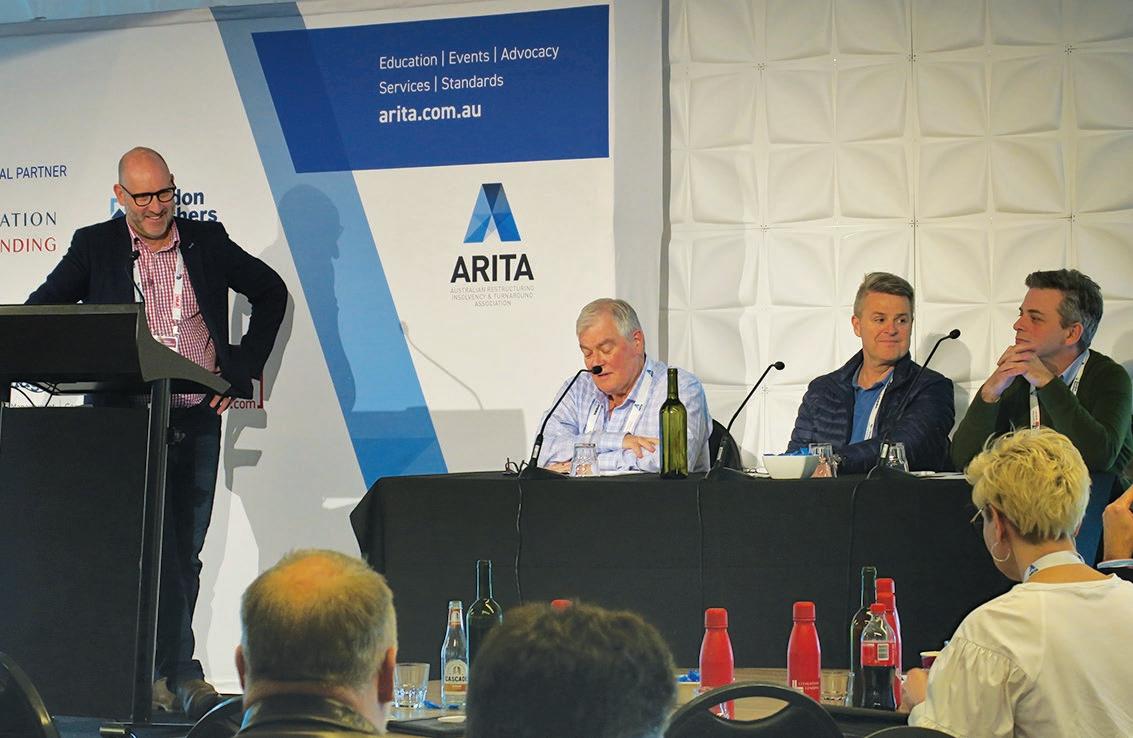
We’d also like to take the opportunity to thank our 2022 sponsors for supporting this event:
• Litigation Lending Services
– Diamond National Partner and Welcome Reception Sponsor
• Gordon Brothers & Ritchie Bros Alliance
– Diamond National Partner
• Gallagher – Platinum National Partner
• Grays – Platinum National Partner
• Turnkey – Coffee cart sponsor
The 2023 Small Practice Conference will be held in Queenstown, New Zealand, on 5–6 October.

National Conference 2022
Sydney
The 2022 ARITA National Conference was held at Sofitel Sydney Darling Harbour on 26-27 October with 219 delegates. Attendees represented accounting, insolvency, law and professional services firms; banks and finance companies; government regulators; universities; and consulting firms.
The two-day event featured 46 well-respected experts and thought leaders presenting a broad and stimulating program. Here are brief summaries of four popular sessions.
• Shared agenda – Kate McClymont, Chief Investigative Reporter, The Sydney Morning Herald shared her alternative viewpoint on uncovering corporate crime in conversation with Bruce Gleeson, Partner, Jones Partners.
• Victims & creditors – The intersection of fraud & insolvency presented by Kathy Sozou, Partner and Andrew Gill, Director at McGrathNicol.
• Building inspection – Insights into the voluntary administration of the Probuild Group presented by Jason Tracy, Partner, Deloitte Australia, Samantha Kinsey, Partner, King & Wood Mallesons and Kylie Archer, CFO, Roberts Co.
• Embracing digital transformation: from mystery to mainstream – Insights provided by Nick Abrahams, Global Coleader, Digital Transformation Practice, Norton Rose Fulbright Australia into how ordinary companies are successfully embracing crypto, NFTs, DeFi & the metaverse, as featured on Nick’s podcast Web3 goes Mainstream.
These plenary sessions were complemented by six masterclass sessions, with ‘Employee or contractor – recent shifts in the law & other employee issues’ and ‘Remuneration – who has priority & when?’ being popular with delegates. Networking opportunities included the welcome reception at The Island and dinner at Doltone House Darling Island, with spectacular views of Sydney Harbour and the city skyline.
We’d like to take the opportunity to thank our 2022 sponsors for supporting this event:
• Litigation Lending Services – Diamond National Partner and Welcome Reception Sponsor
• Gordon Brothers & Ritchie Bros Alliance – Diamond National Partner
• Gallagher – Platinum National Partner
• Grays – Platinum National Partner
• LK Law – Conference Dinner Sponsor
• Turnkey – Coffee Cart Sponsor
• Macquarie Bank – Named Sponsor






4 - 6 October 2023
Queenstown, New Zealand

ARITA 2023 SMALL PRACTICE CONFERENCE
Queenstown, New Zealand
DESTINATION EVENT EXCLUSIVELY FOR ARITA SMALL PRACTICE MEMBERS
• 2-day full days of exceptional conference content directly relevant to small practice leadership
• Targeted at members working in firms of less than 5 partners (sorry, no non-member bookings)
• Unique opportunity to network and engage with others who deal with the same day-to-day challenges as you
Welcome Reception Reds Bar, QT Queenstown

2-Day Conference QT Queenstown

Dinner Stoneridge Estate

CONFERENCE
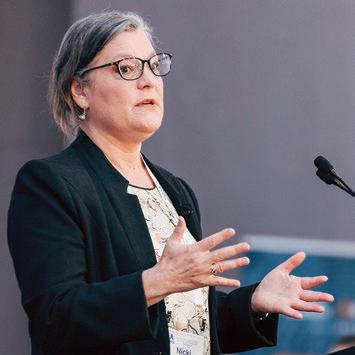


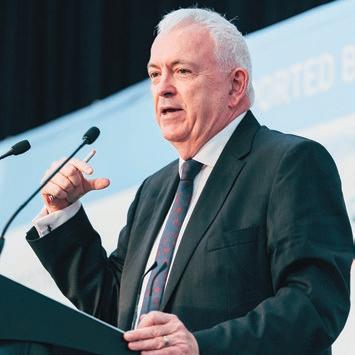

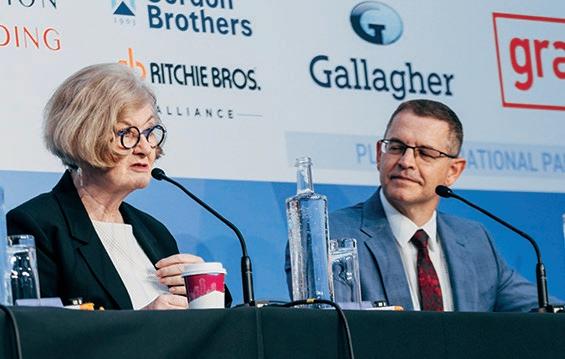
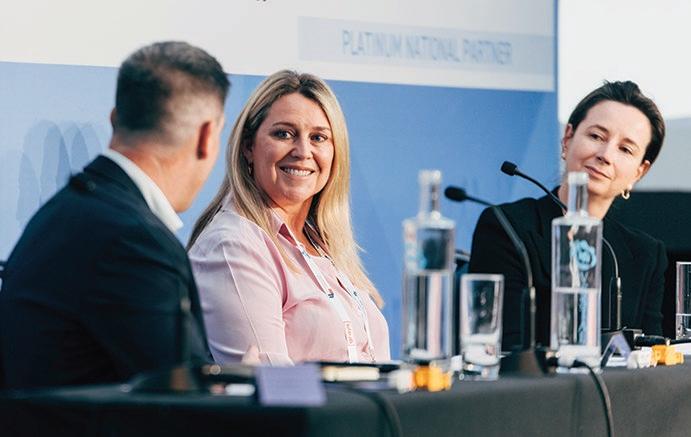
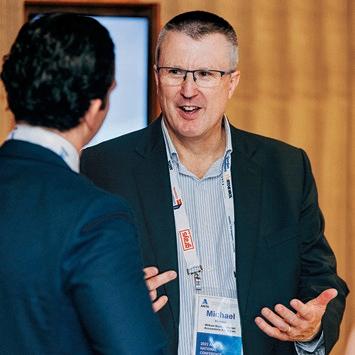

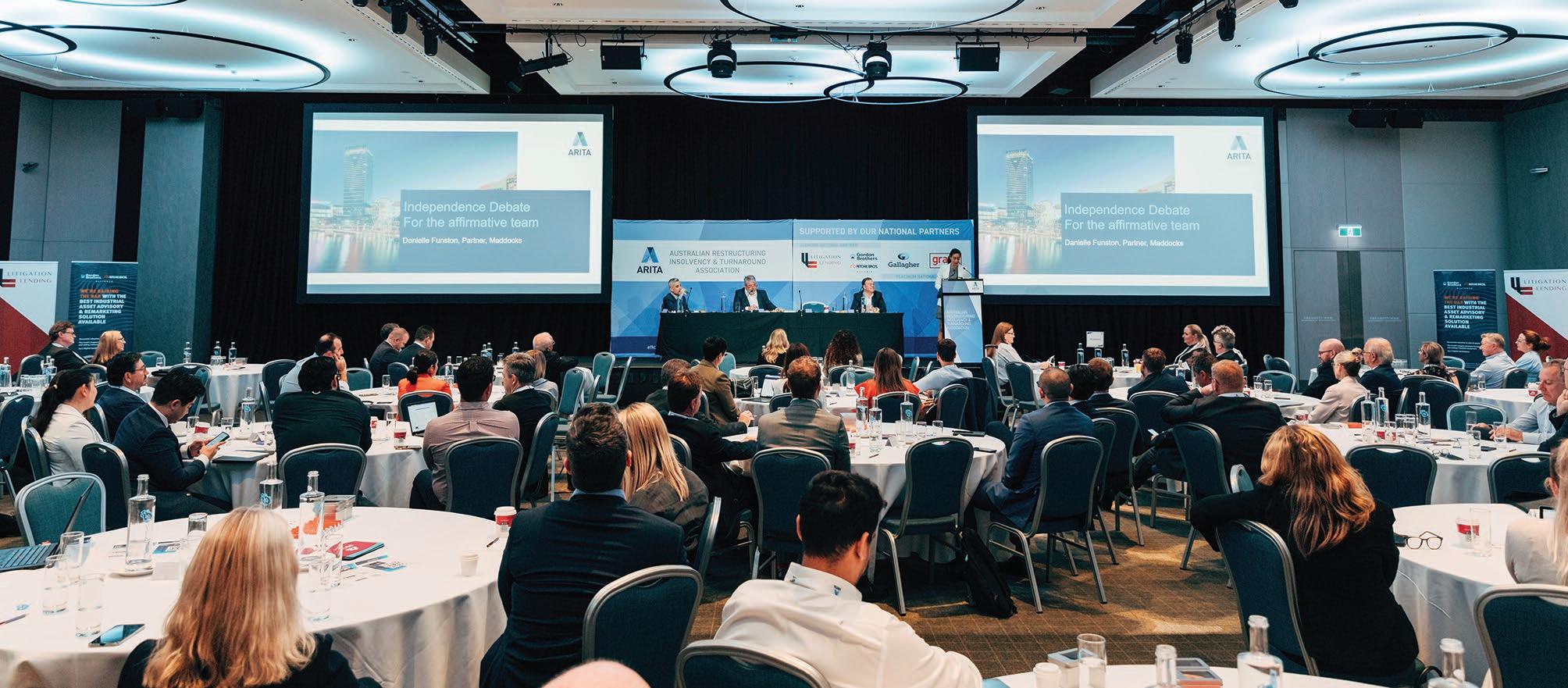






The
6
4
ARITA ADVANCED
2023
FEBRUARY 2023
Fundamentals of Restructuring, Insolvency and Turnaround content includes:
• Course delivery: online
• Australia's preeminent insolvency and restructuring course with thousands of graduates since 1991
• A recognised qualification to become a Registered Liquidator or Registered Trustee
• The only education pathway to becoming an ARITA Professional Member
Across August to October, CPE opportunities included ARITA National Conference, Small Practice Conference, Expert Series: Bankruptcy and Expert Series: Insolvency, Young Professionals seminars and a range of in-person forums.
1604 Members, Subscribers and other professionals recorded 7257 CPE hours, and close to 900 individuals participated in ARITA networking events.
Destination event exclusively for ARITA small practice members:
• 2-day full days of exceptional conference content directly relevant to small practice leadership
• Unique opportunity to network and engage with others who deal with the same day-to-day challenges as you
• Targeted at members working in firms of less than 5 partners
ESSENTIAL SKILLS SERIES: ON DEMAND LEARNING
Management
• Voluntary Administrator's Reports
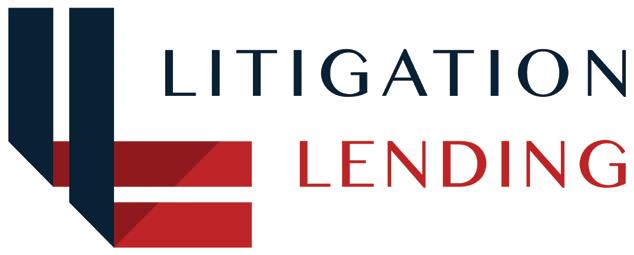







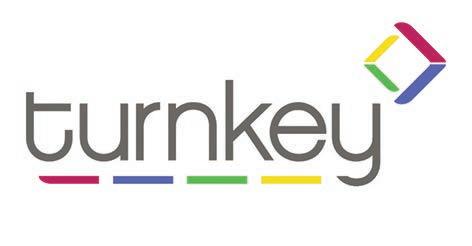











The Gallagher Insolvency and Turnaround practice operates throughout Australia, New Zealand and Singapore backed by the global strength of Gallagher.
Our insurance advisory team has a wealth of industry experience and we go beyond simply finding you the right insurance solution. We gain a deep understanding of your unique risks, work with you as a trusted partner and use our market influence to benefit your business.
Call our national Insolvency & Turnaround team on 1300 720 229 to arrange a no-obligation discussion about the ideal insurance solution for your business, or visit ajg.com.au/insolvency

